|
|
|
|
HOME
|
US Navy -
ships
|
US Navy - air
units
|
USMC - air
units
|
International
Navies
|
Weapon Systems
|
Special Reports |
|
|
|
|
|
|
|
Royal Australian Navy - Guided Missile FrigateFFG 03 HMAS Sydney |
|
|
|
|
| sorry, no insignia |
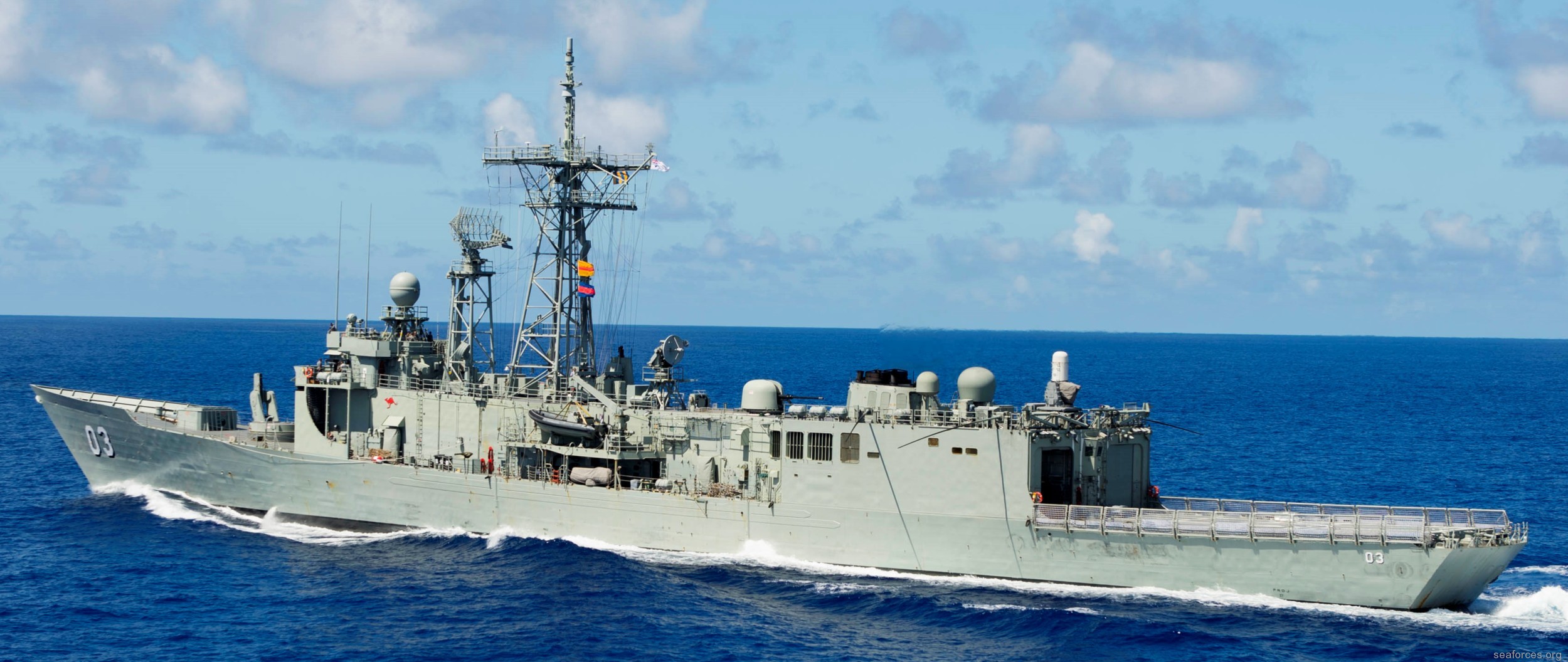 |
|
|
|
|
Type,
class: Guided Missile Frigate / FFG; Adelaide class Builder: Todd Pacific Shipyards Co., Seattle, Washington, USA STATUS: Laid down: January 16, 1980 Launched: September 26, 1980 Commissioned: January 29, 1983 Decommissioned: November 7, 2015 Fate: moored at Fleet Base East as a training ship Namesake: City of Sydney, New South Wales Ships Motto: THOROUGH AND READY Technical Data: see INFO > Adelaide class Guided Missile Frigate / FFG |
|
|
|
|
ship images |
|
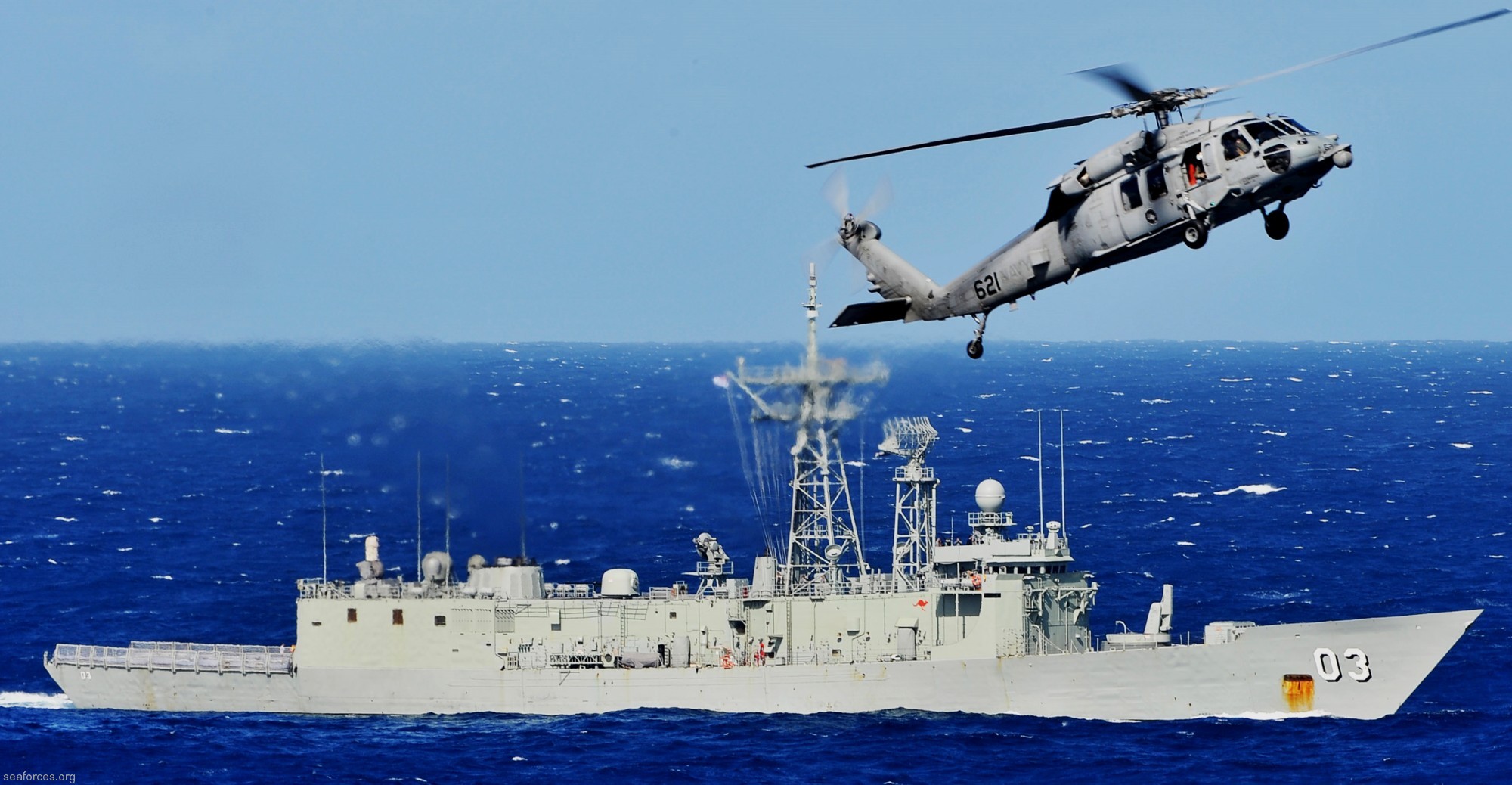 Coral Sea - July 2013 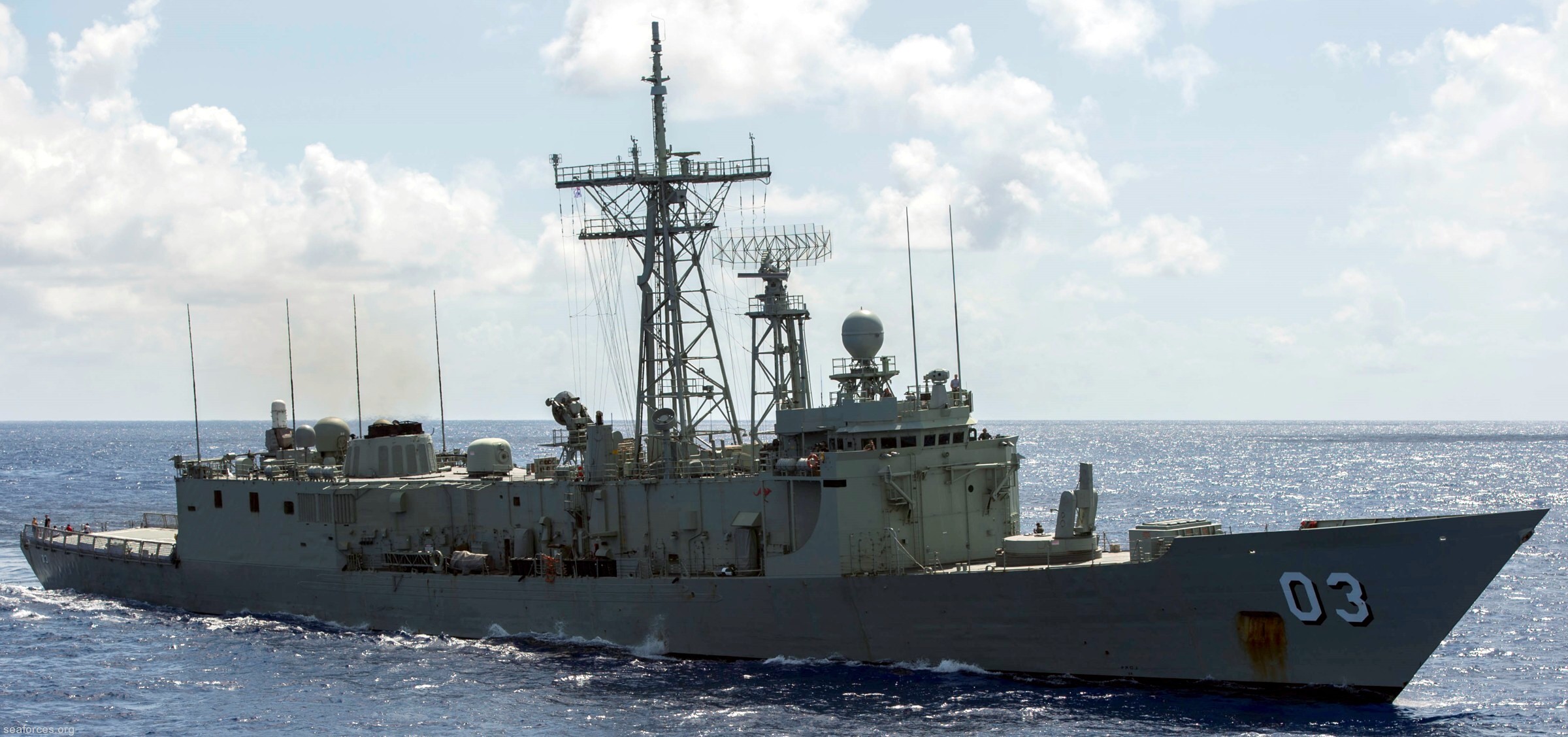 June 2013  June 2013  June 2013 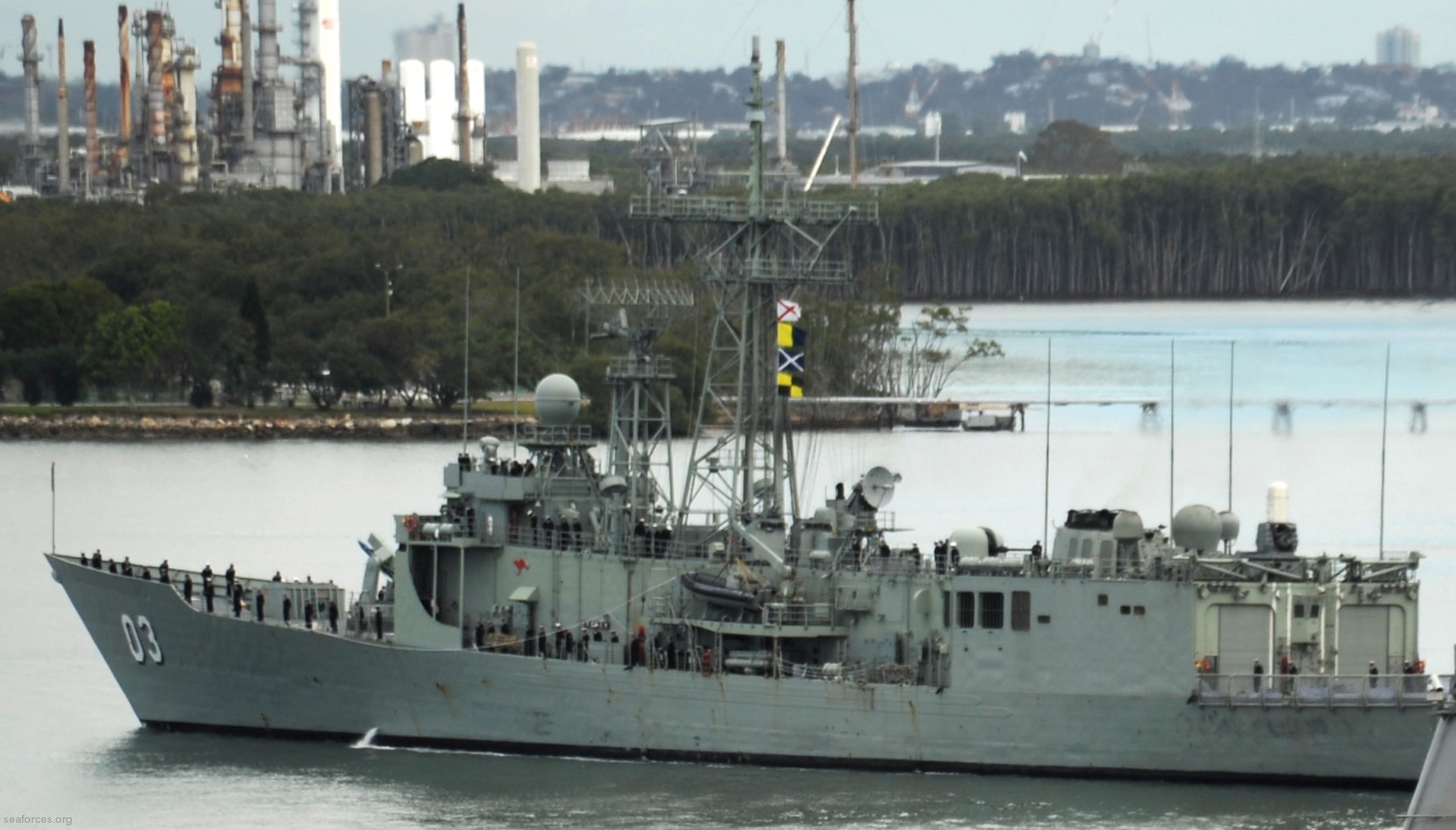 Brisbane, Australia - June 2013 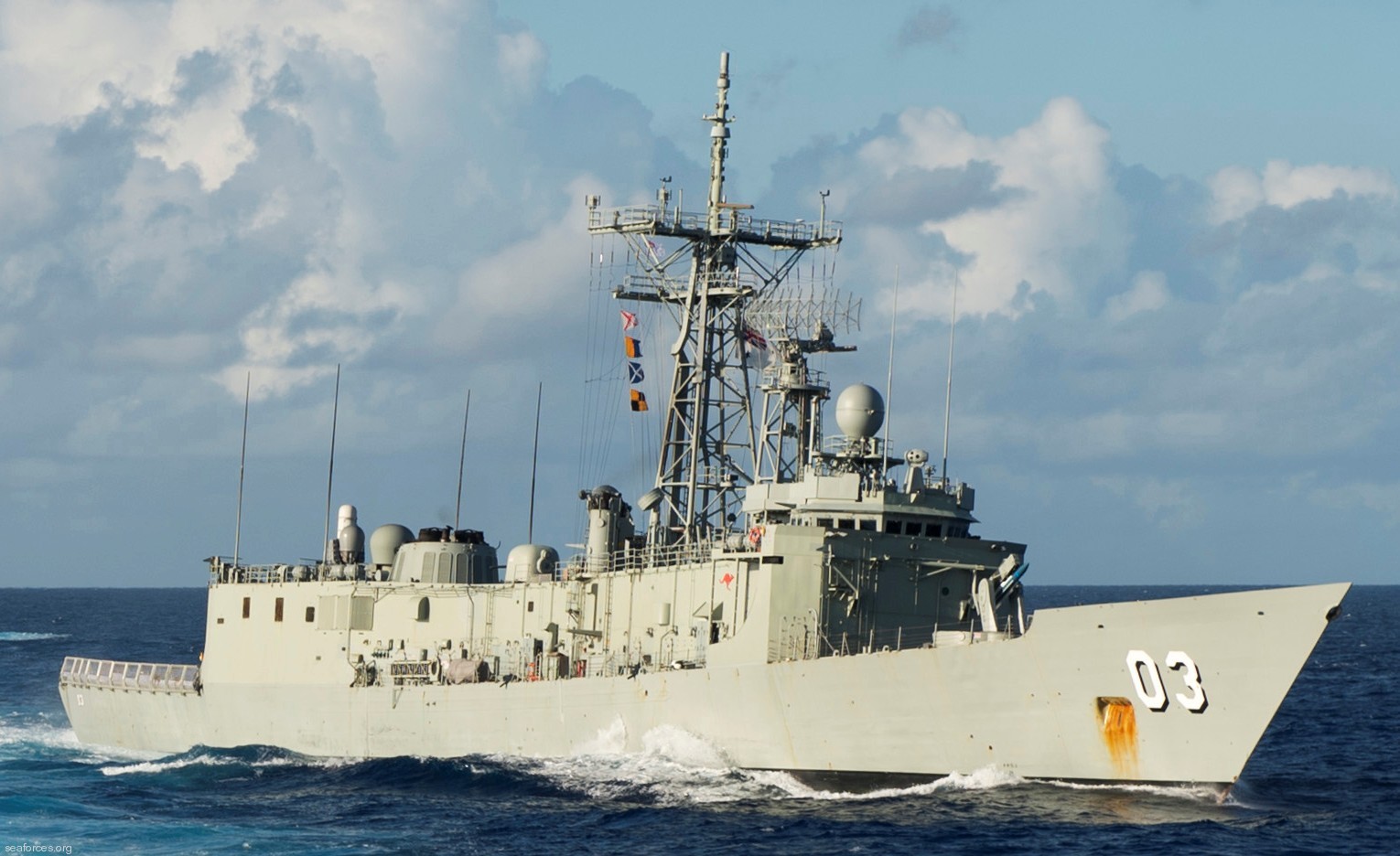 June 2013 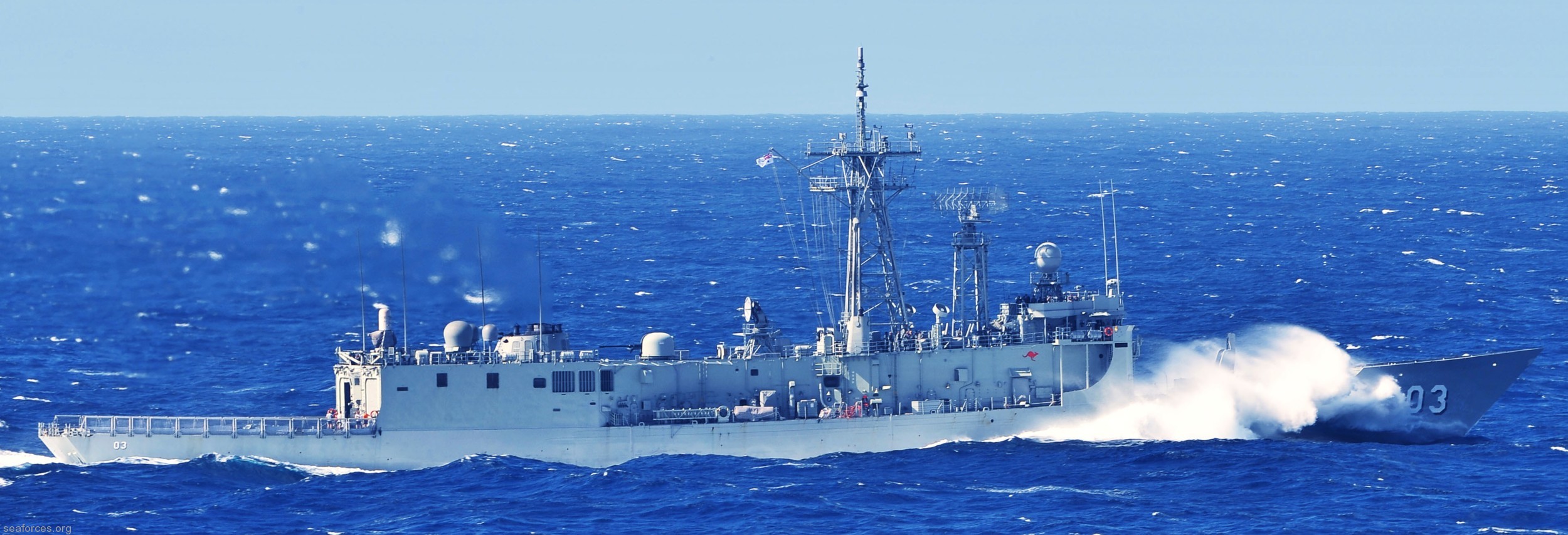 June 2013 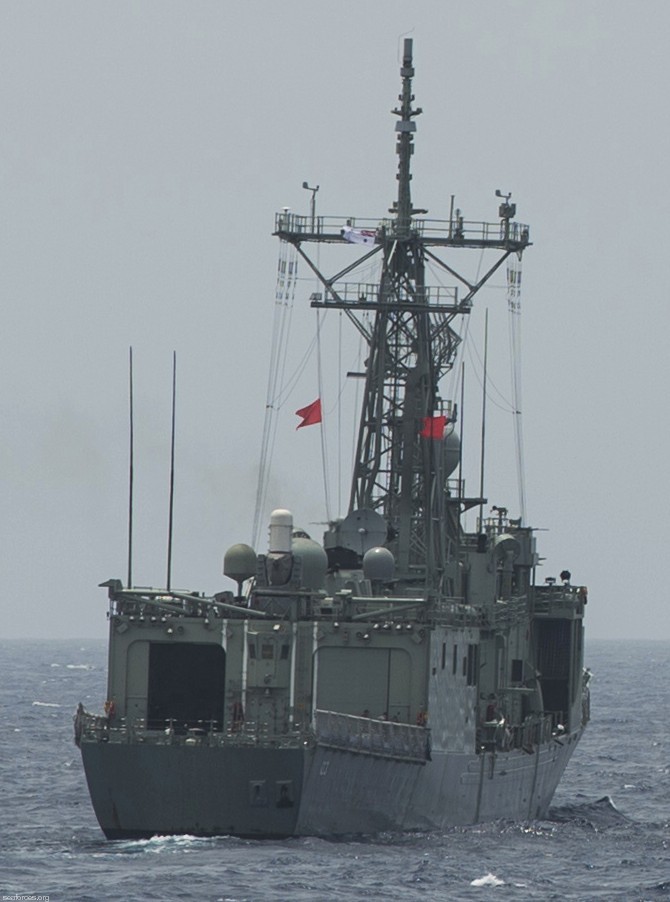 June 2013 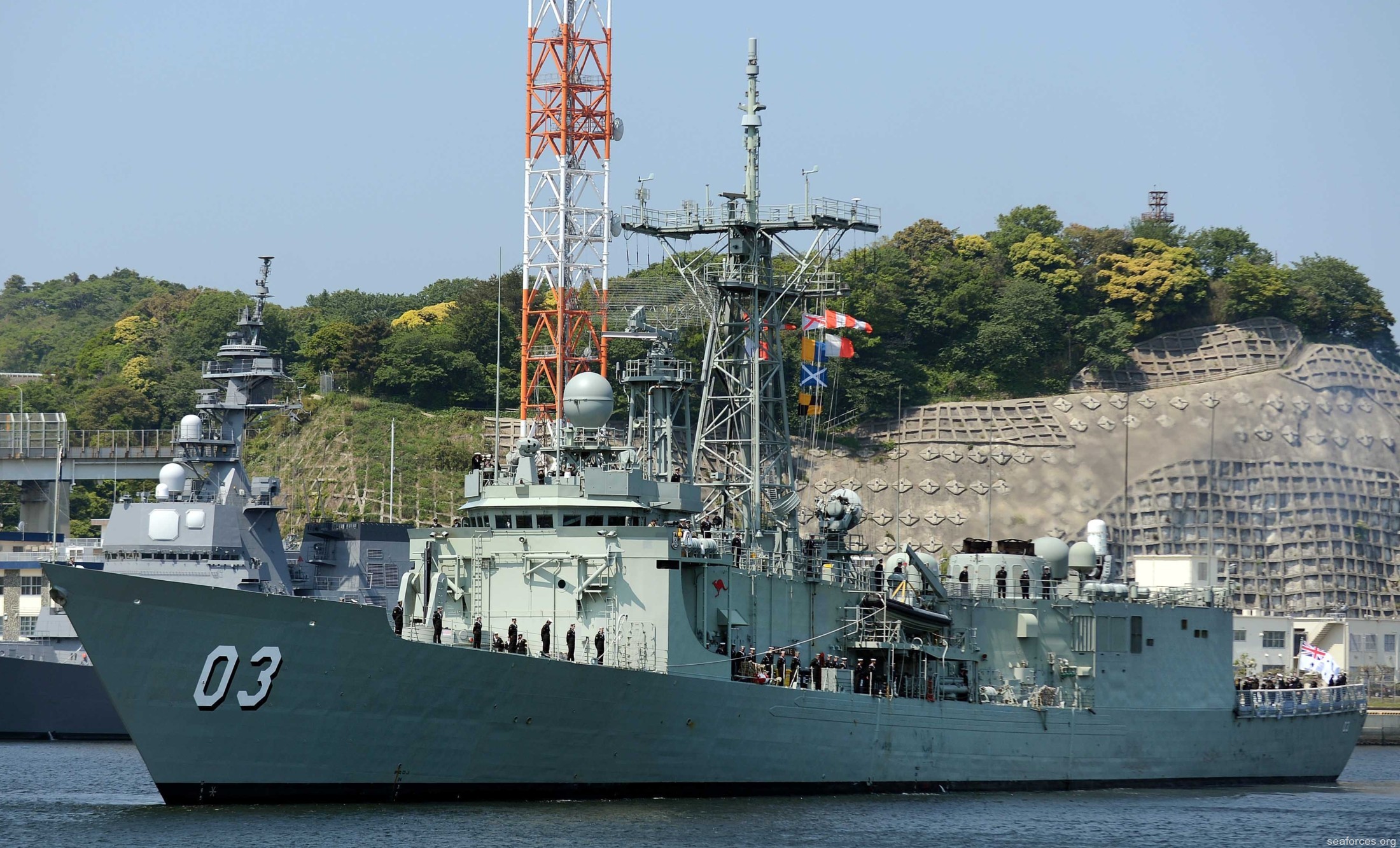 Yokosuka, Japan - May 2013 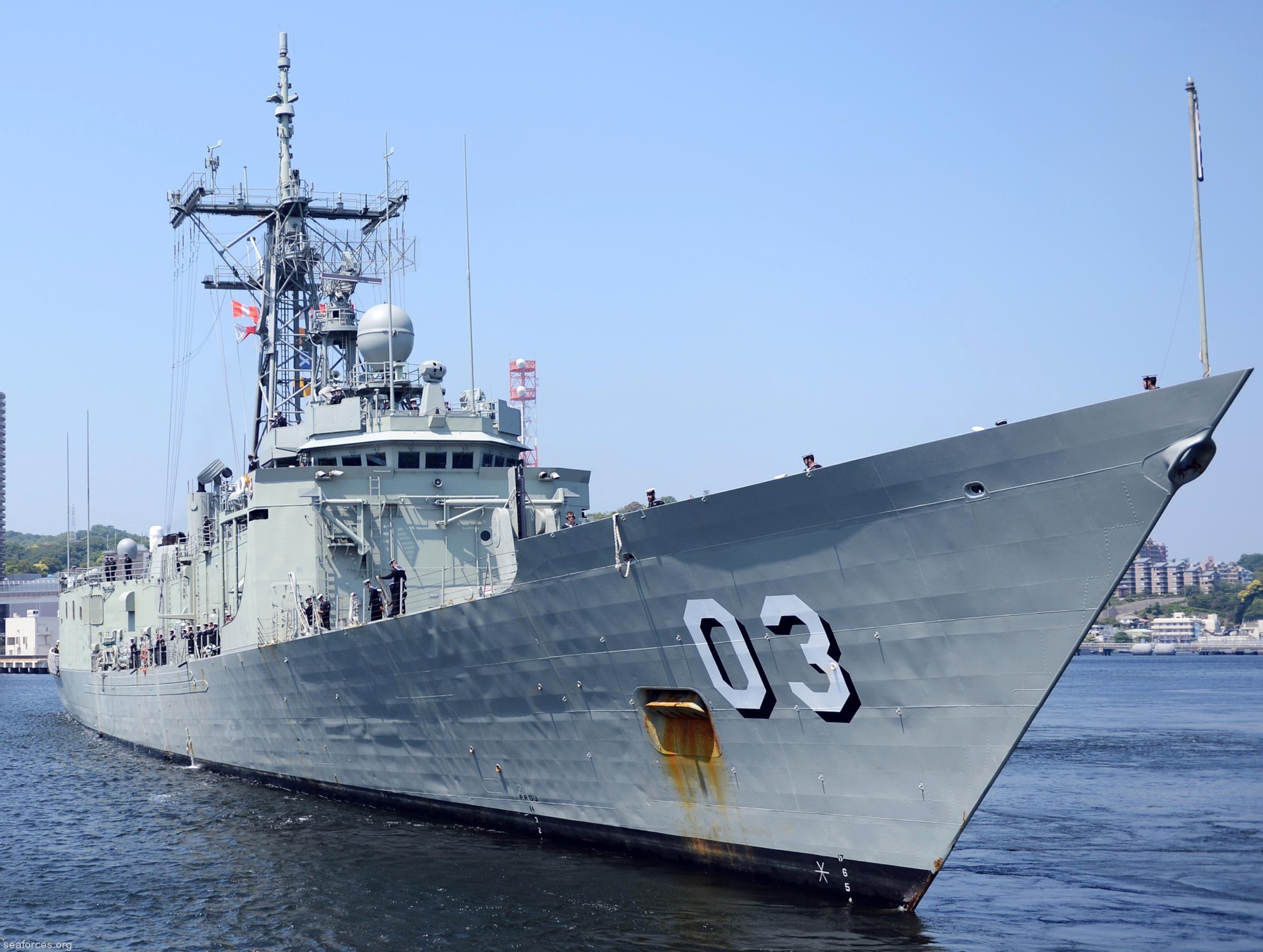 Yokosuka, Japan - May 2013 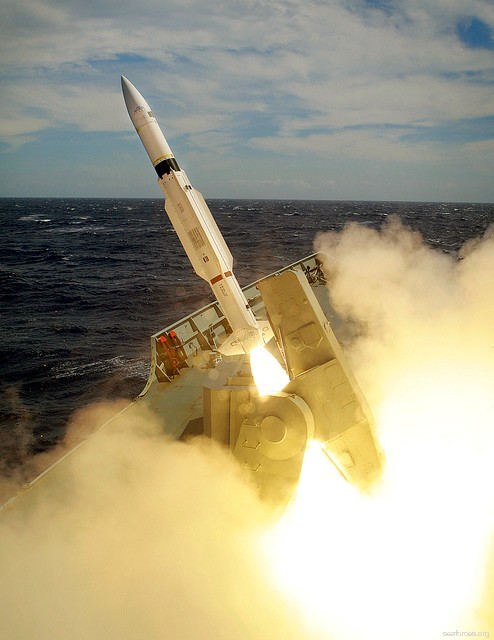 HMAS Sydney fires a RIM-66 Standard Missile SM-2MR off Hawaii - June 2011  HMAS Sydney fires a RIM-66 Standard Missile SM-2MR off Hawaii - June 2011 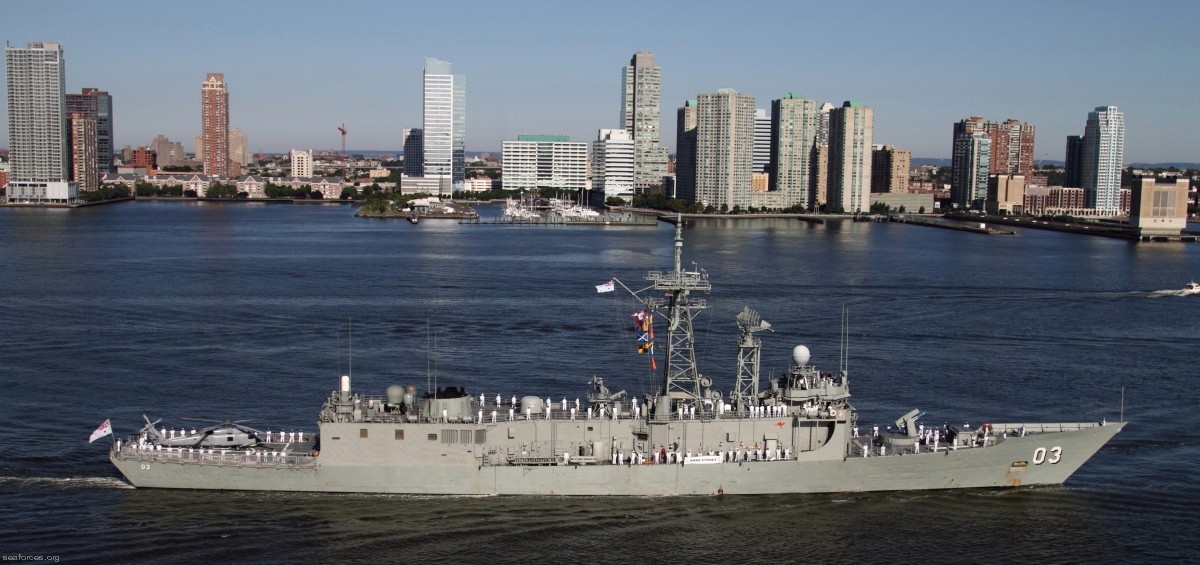 New York - July 2009 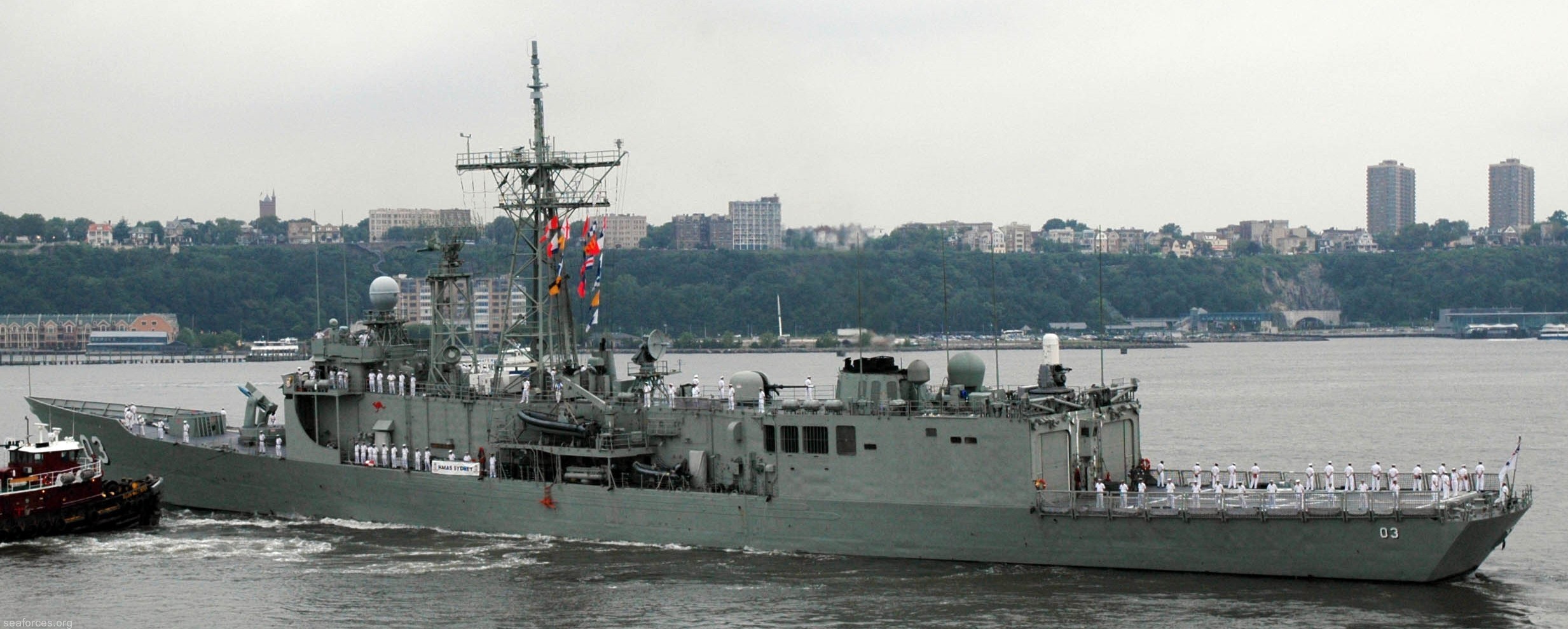 New York - July 2009 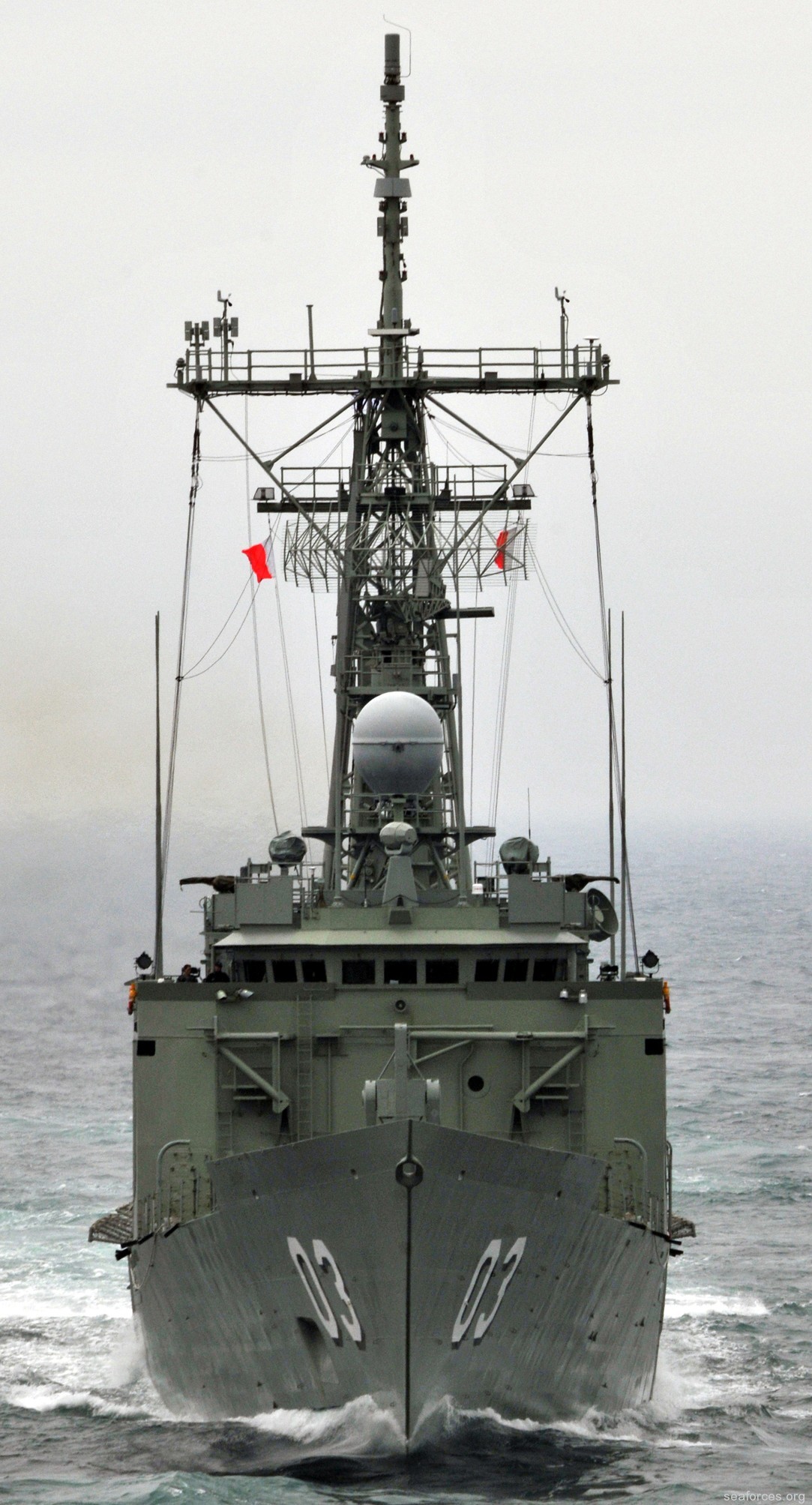 Atlantic Ocean - July 2009 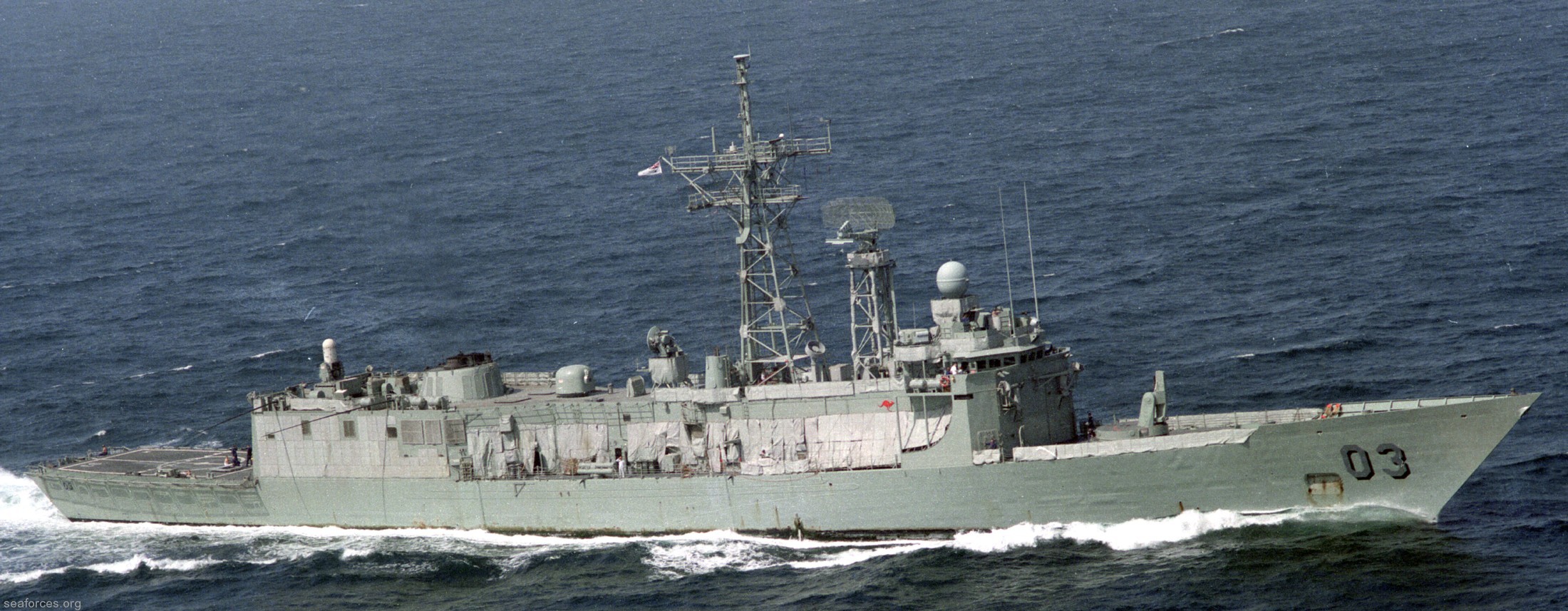 underway during Operation Desert Storm/Shield - January 1991 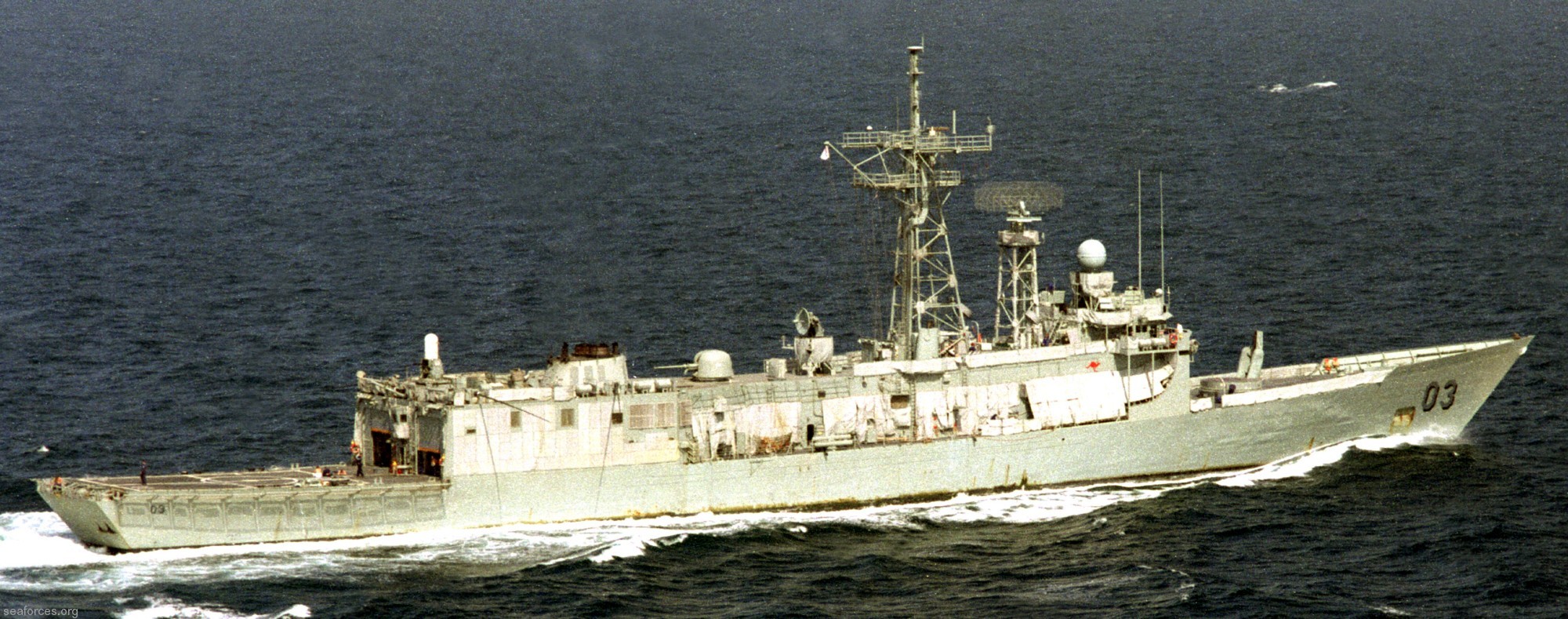 underway during Operation Desert Storm/Shield - January 1991 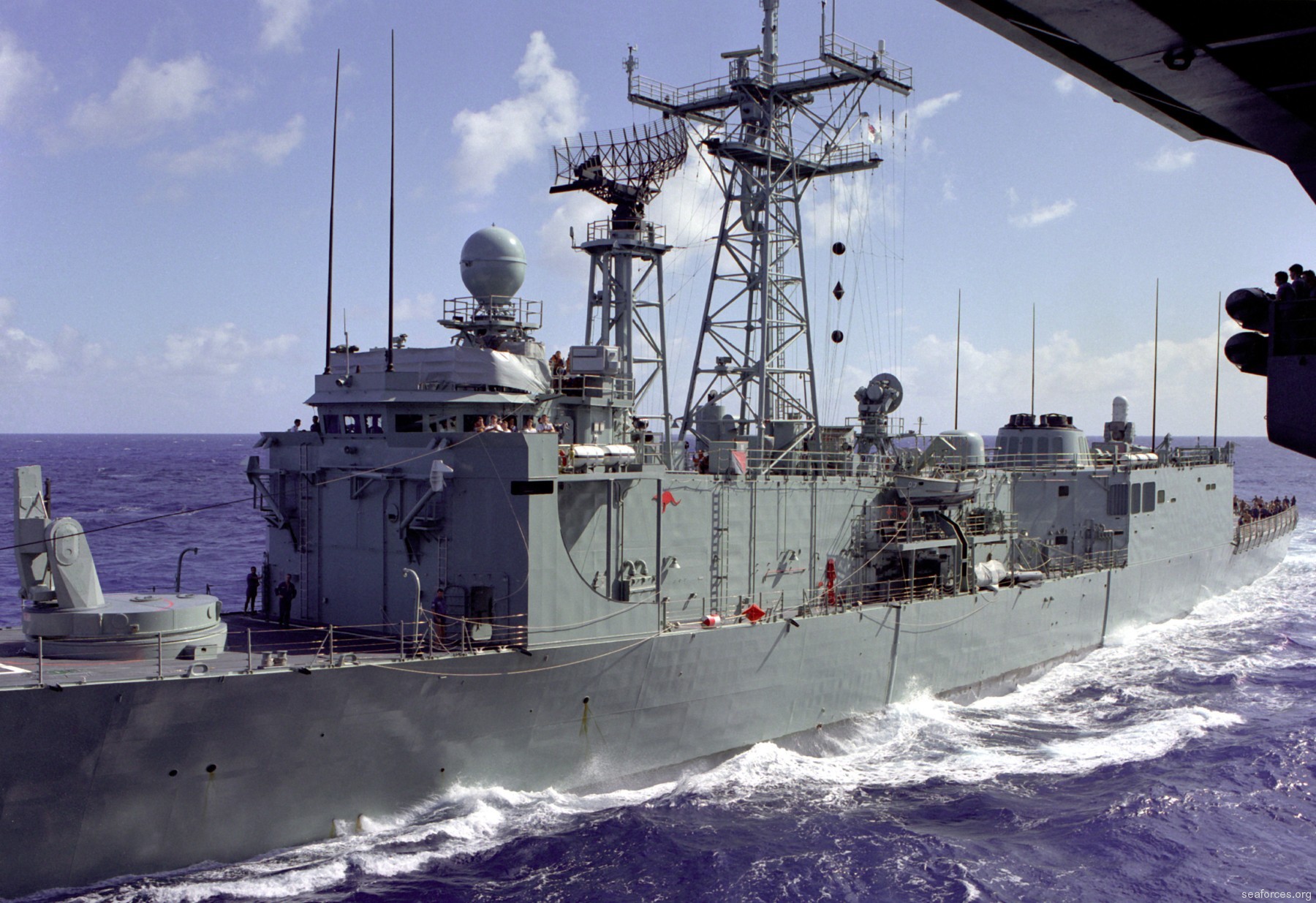 June 1986 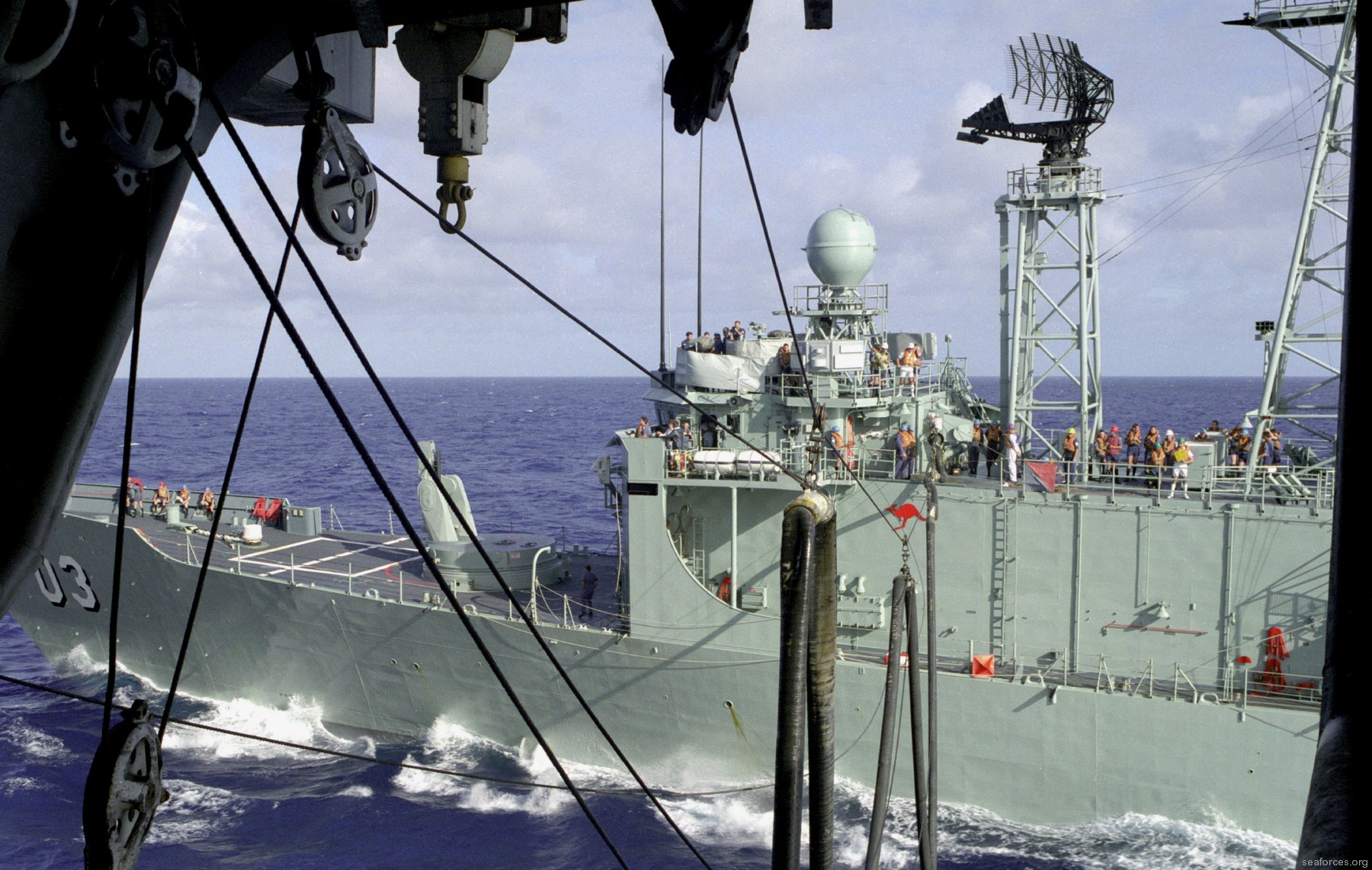 June 1986 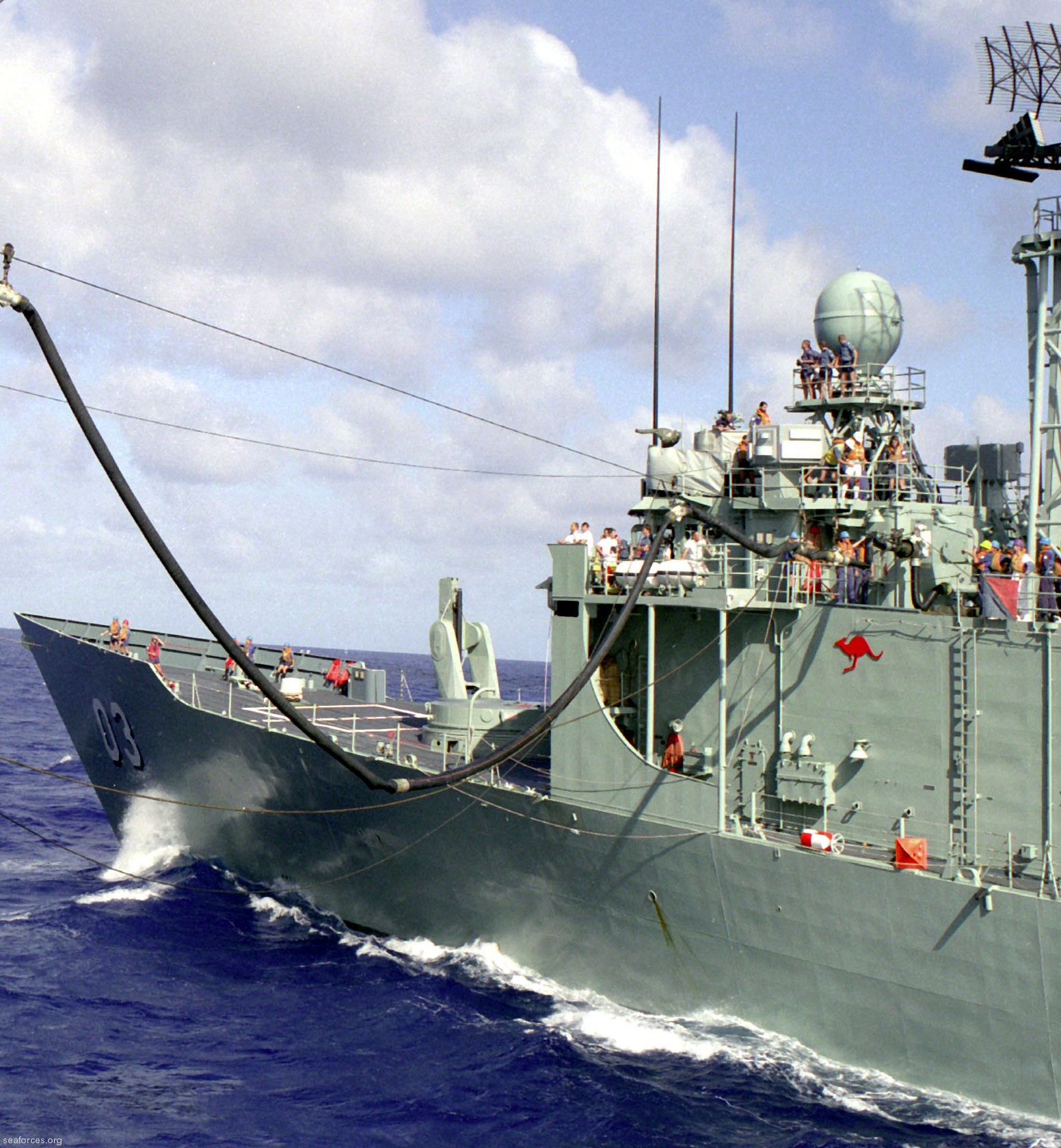 June 1986 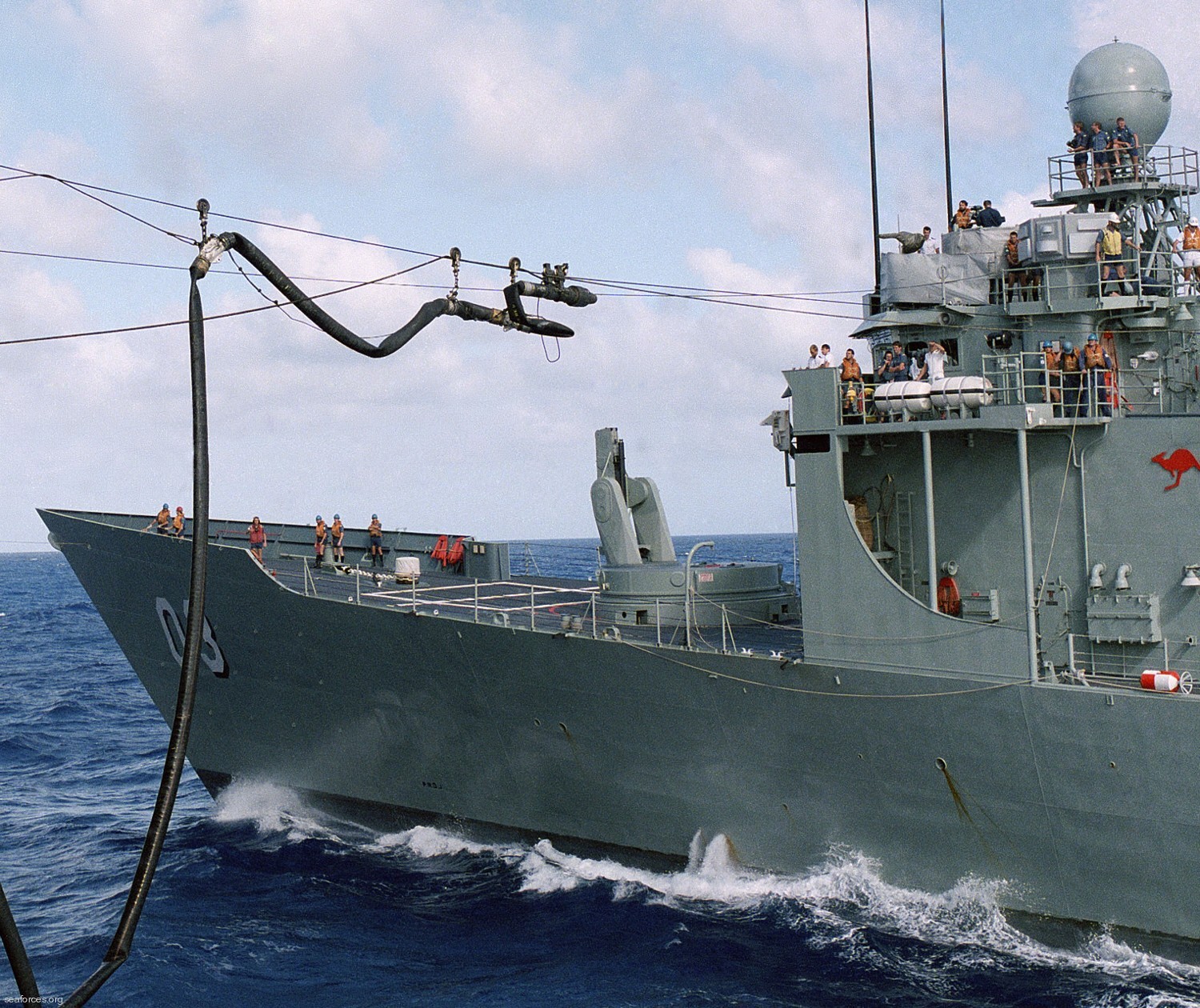 June 1986 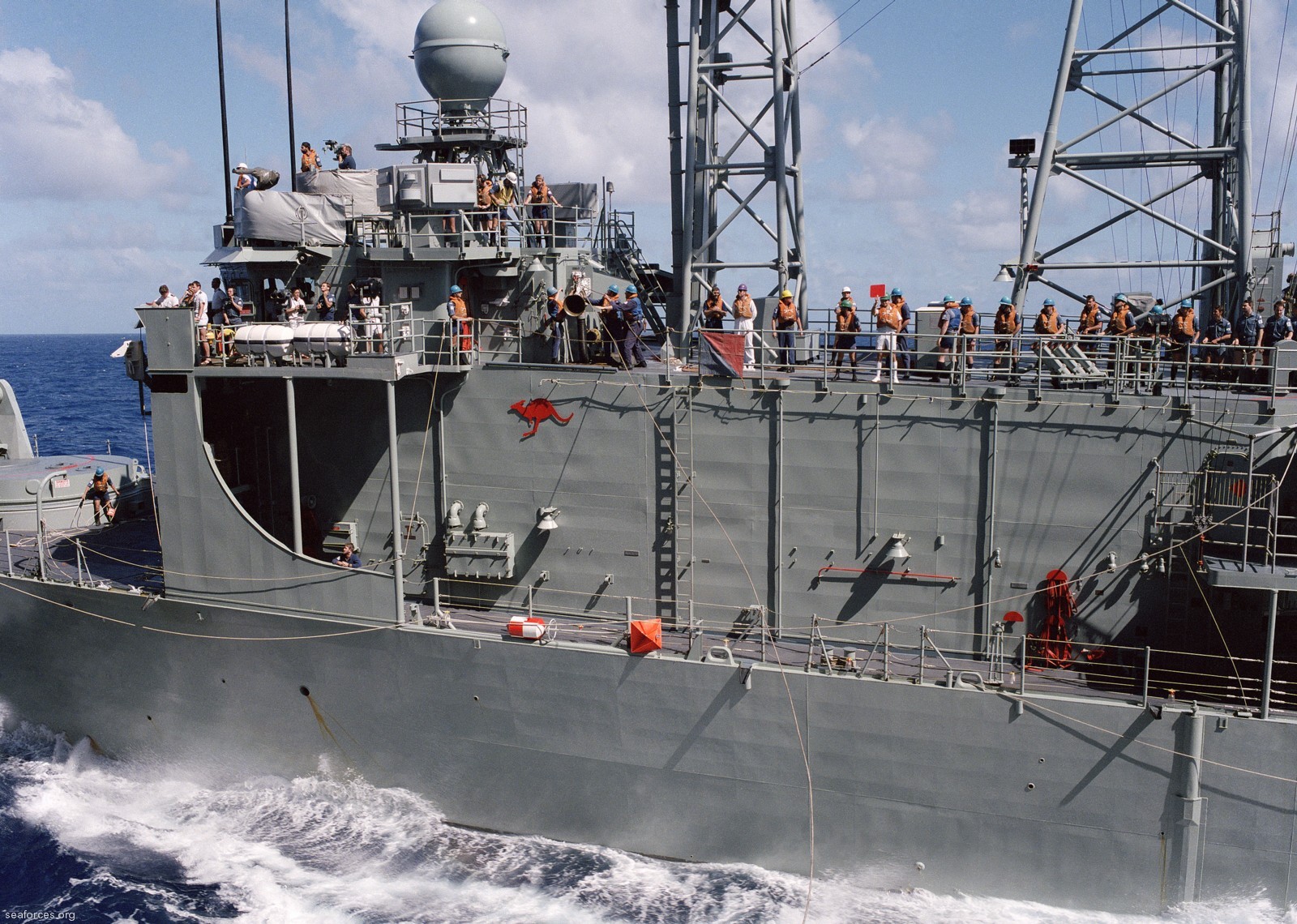 June 1986 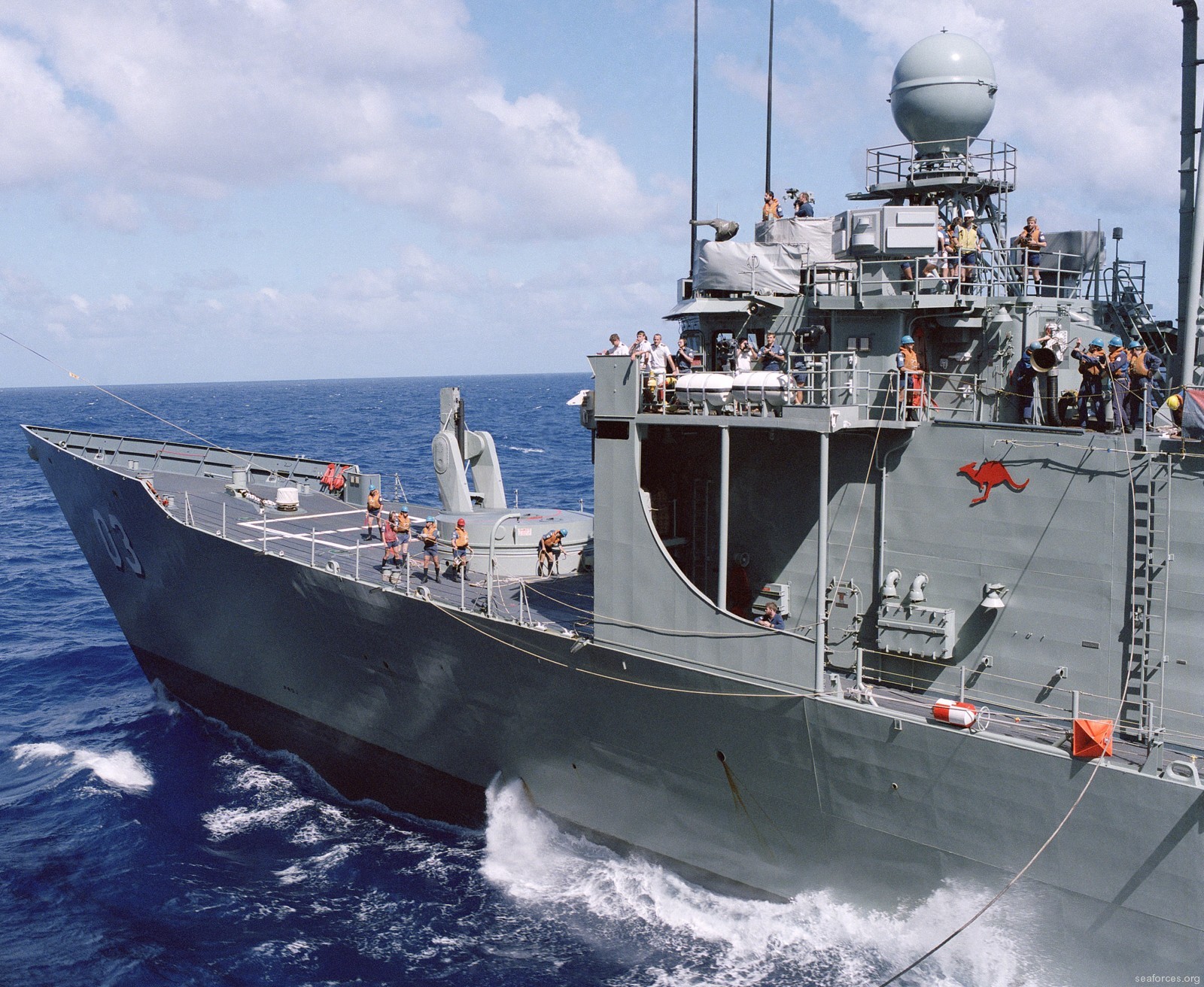 June 1986 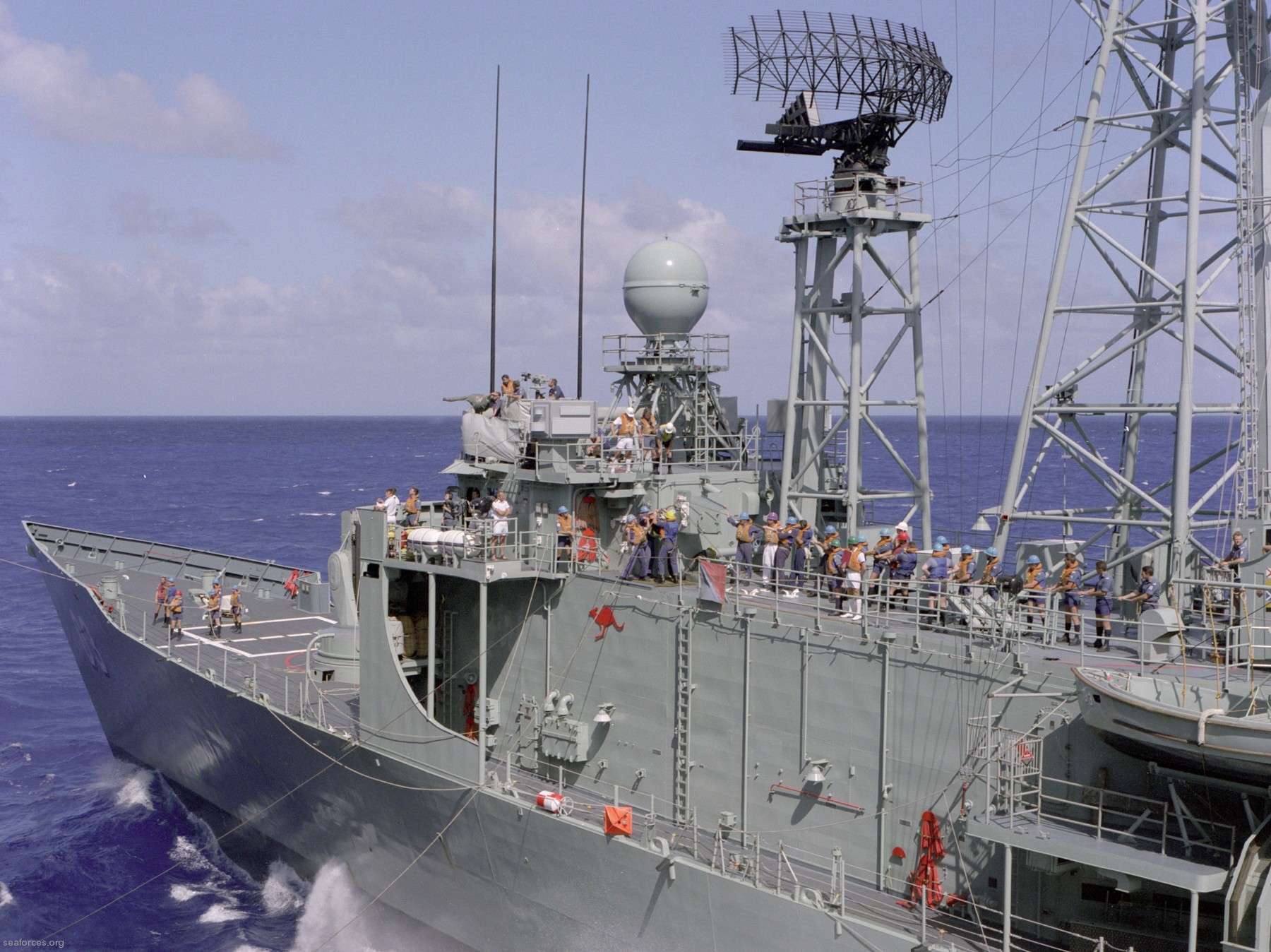 June 1986 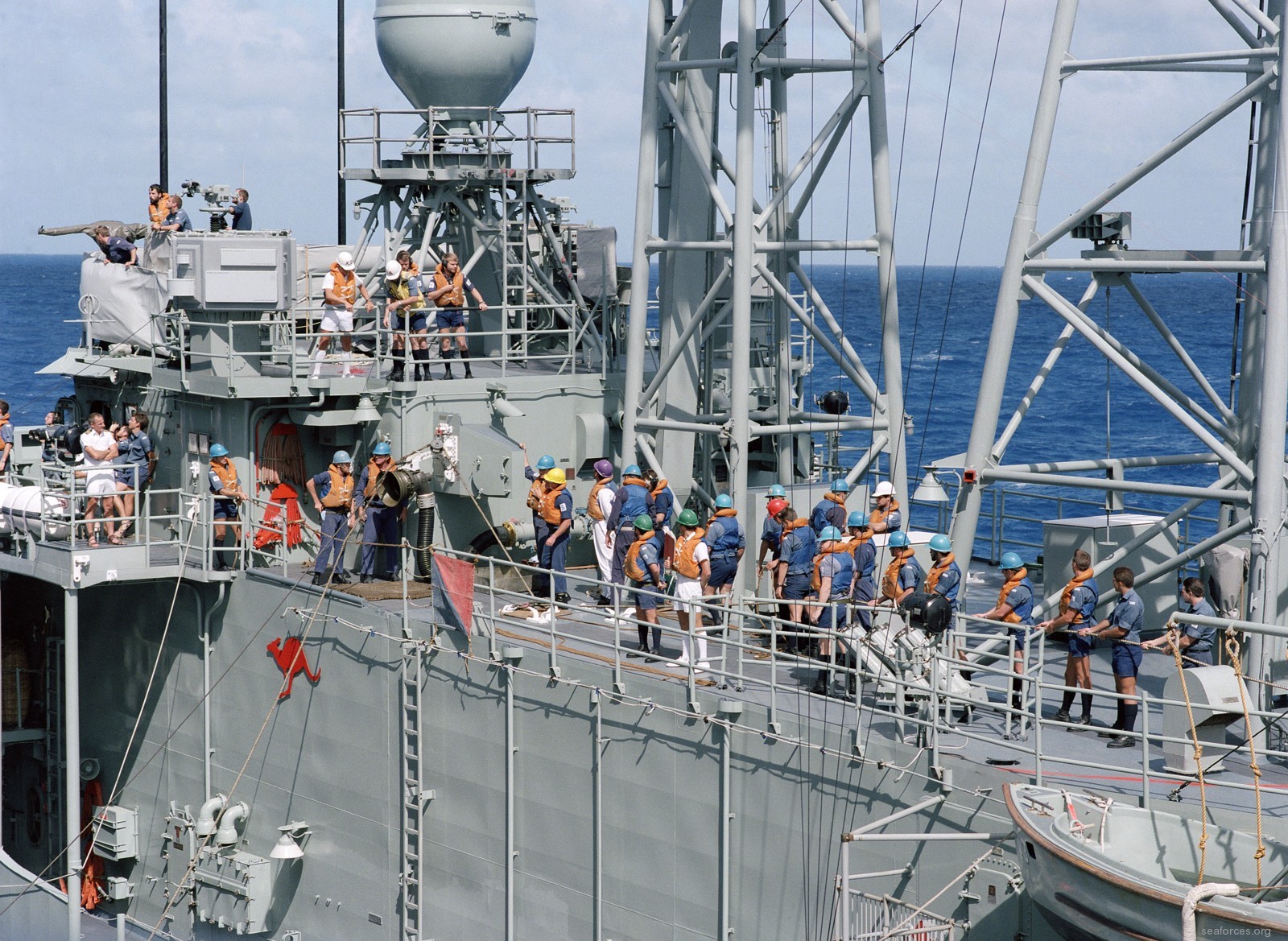 June 1986 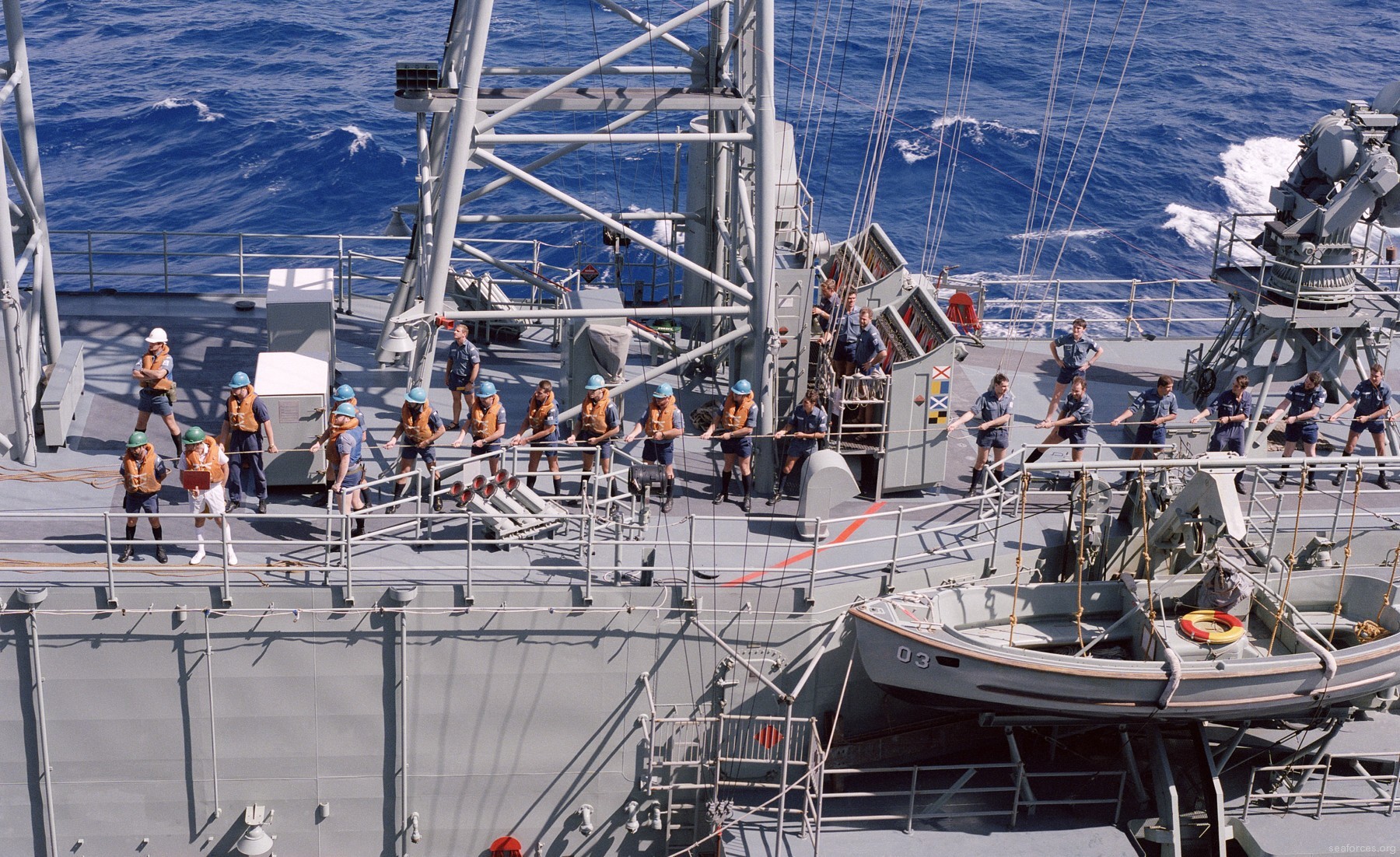 June 1986 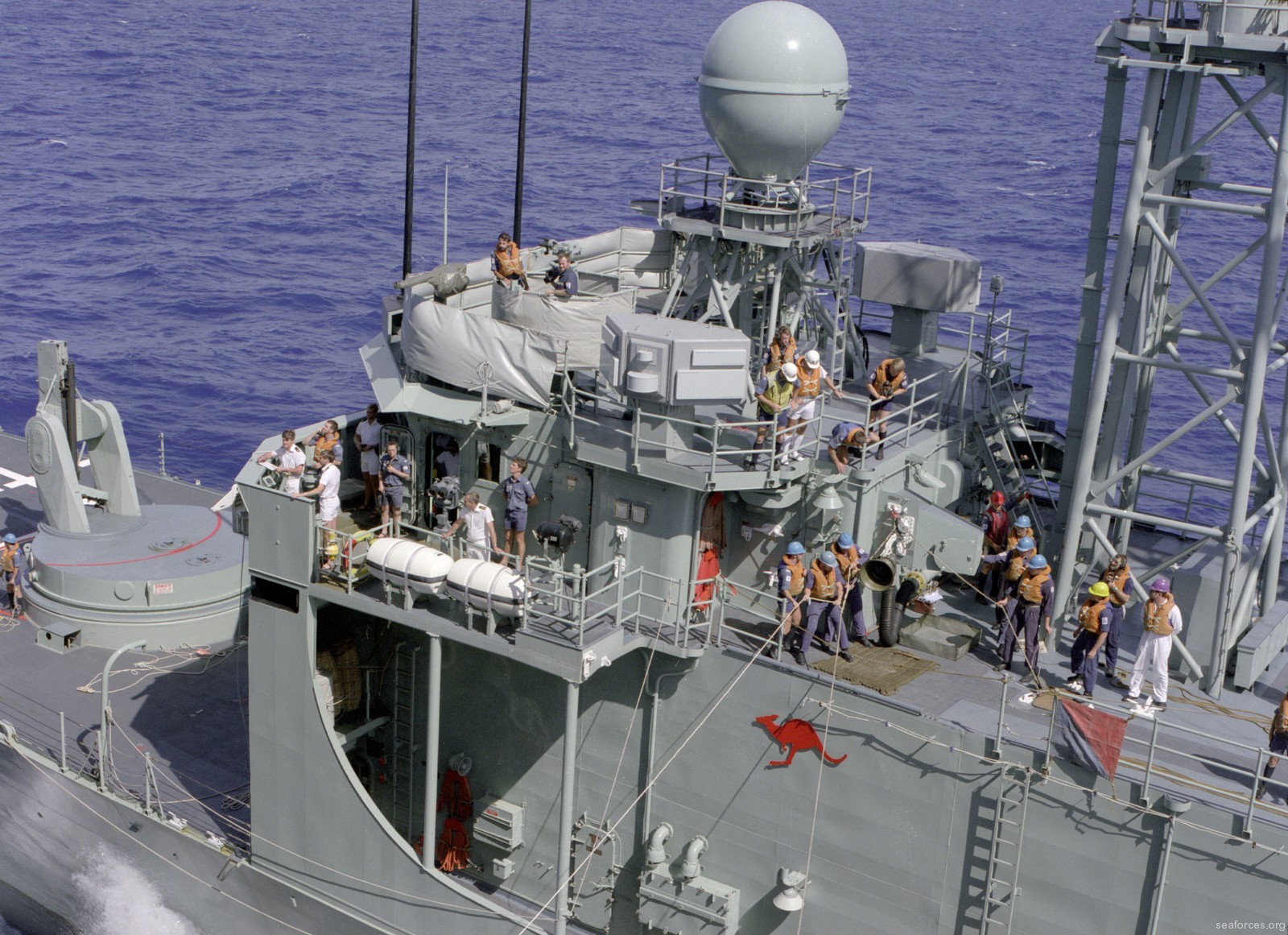 June 1986 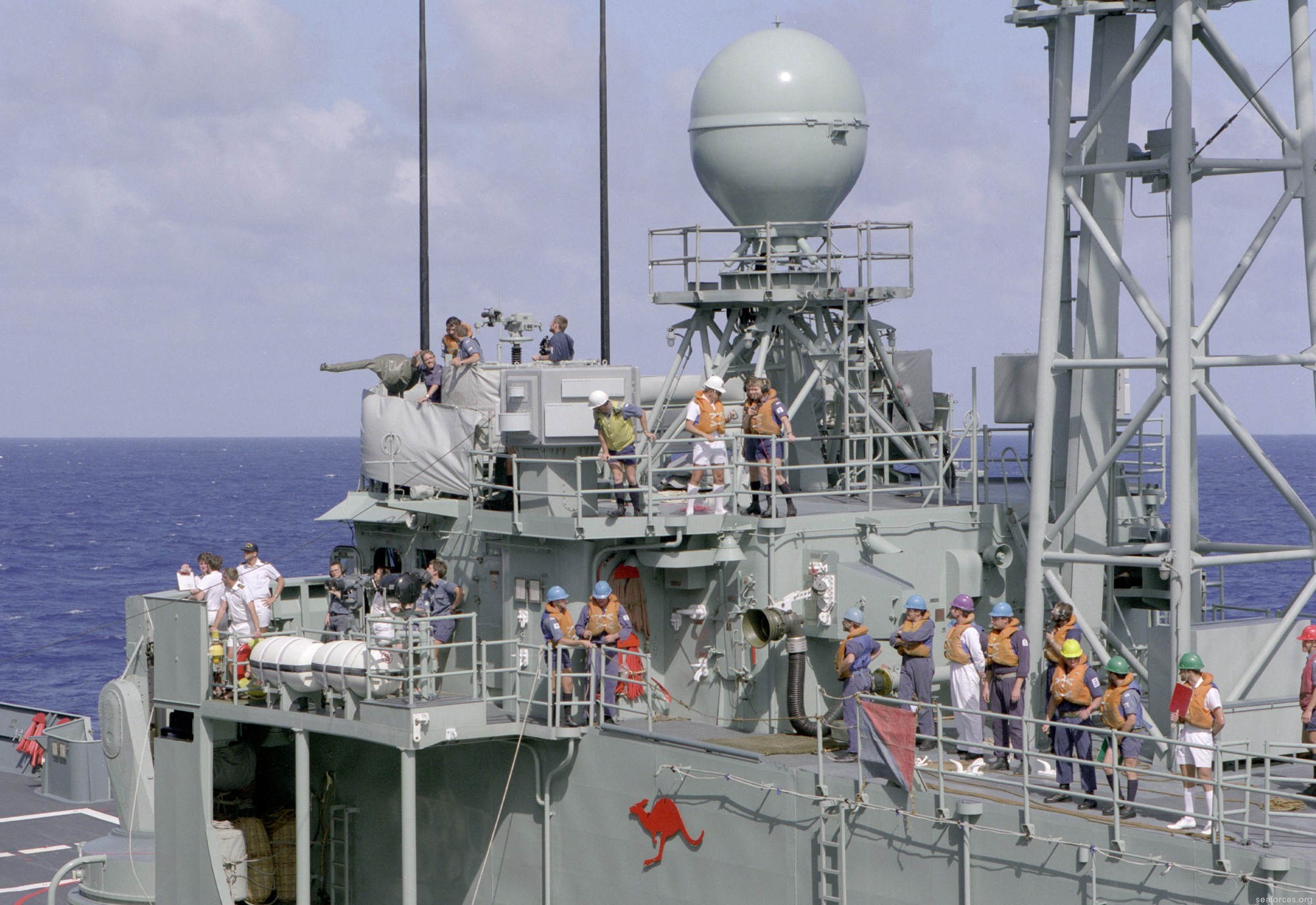 June 1986 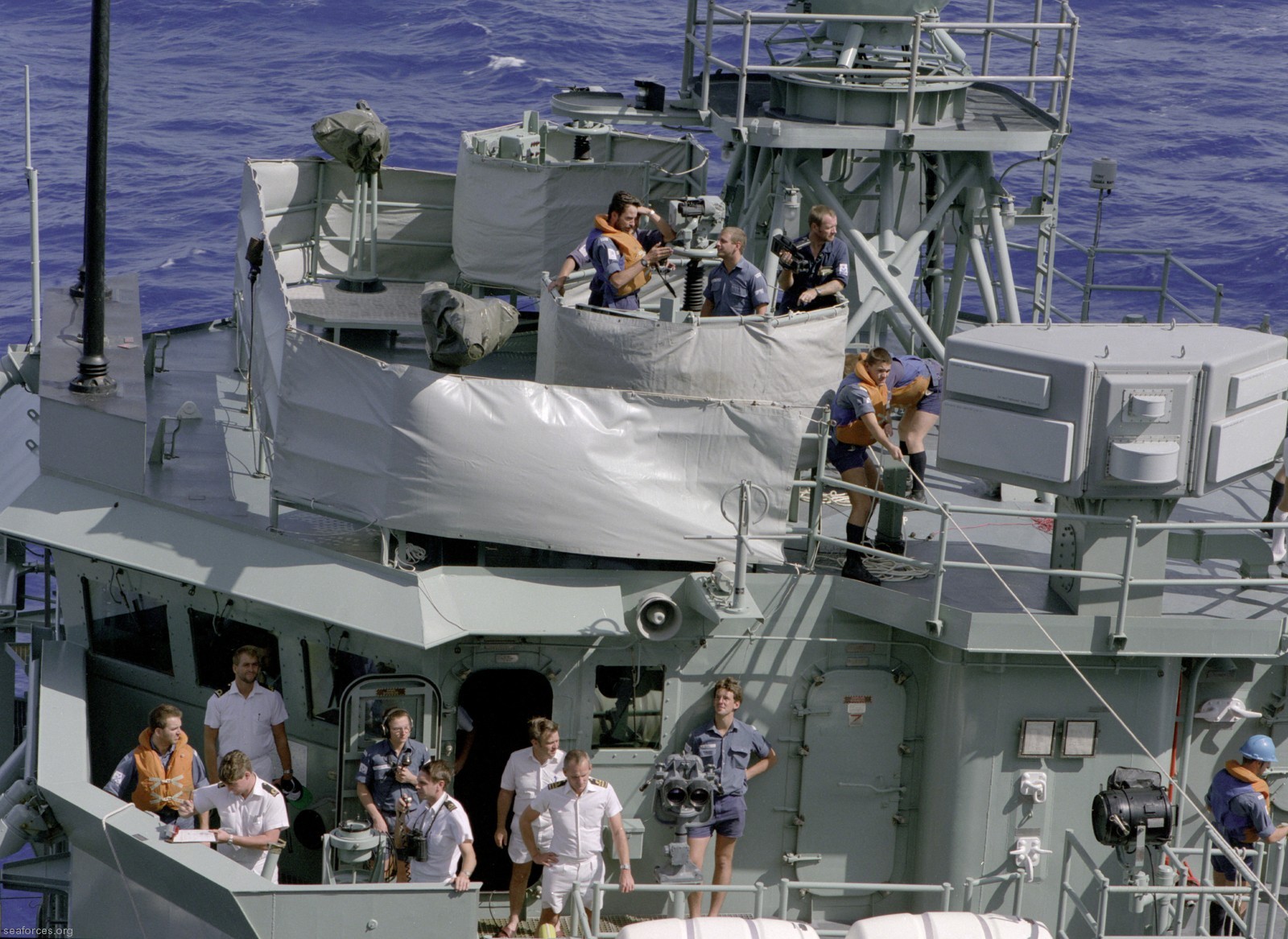 June 1986 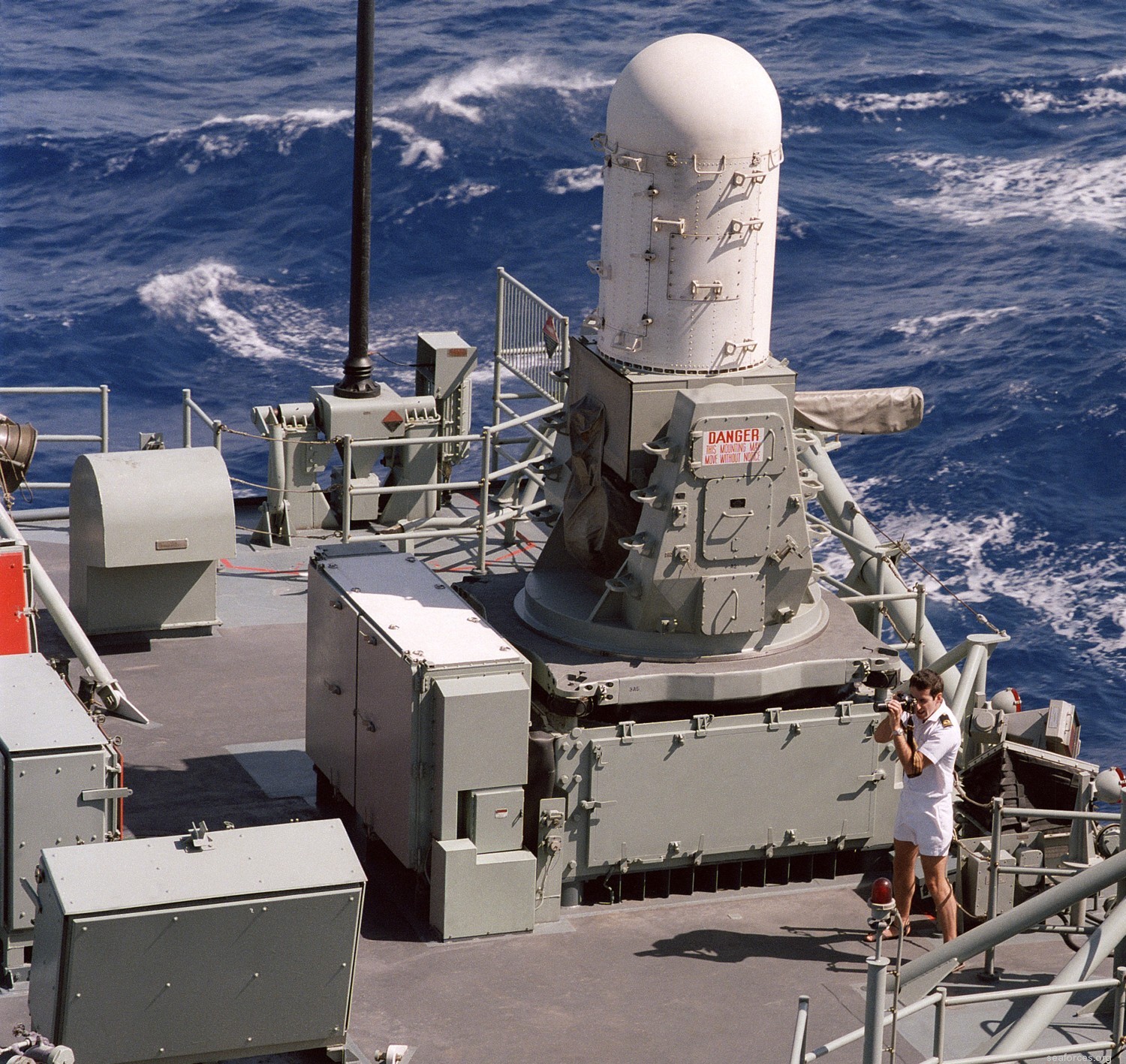 Mk-15 Phalanx close-in weapon system (CIWS) - June 1986 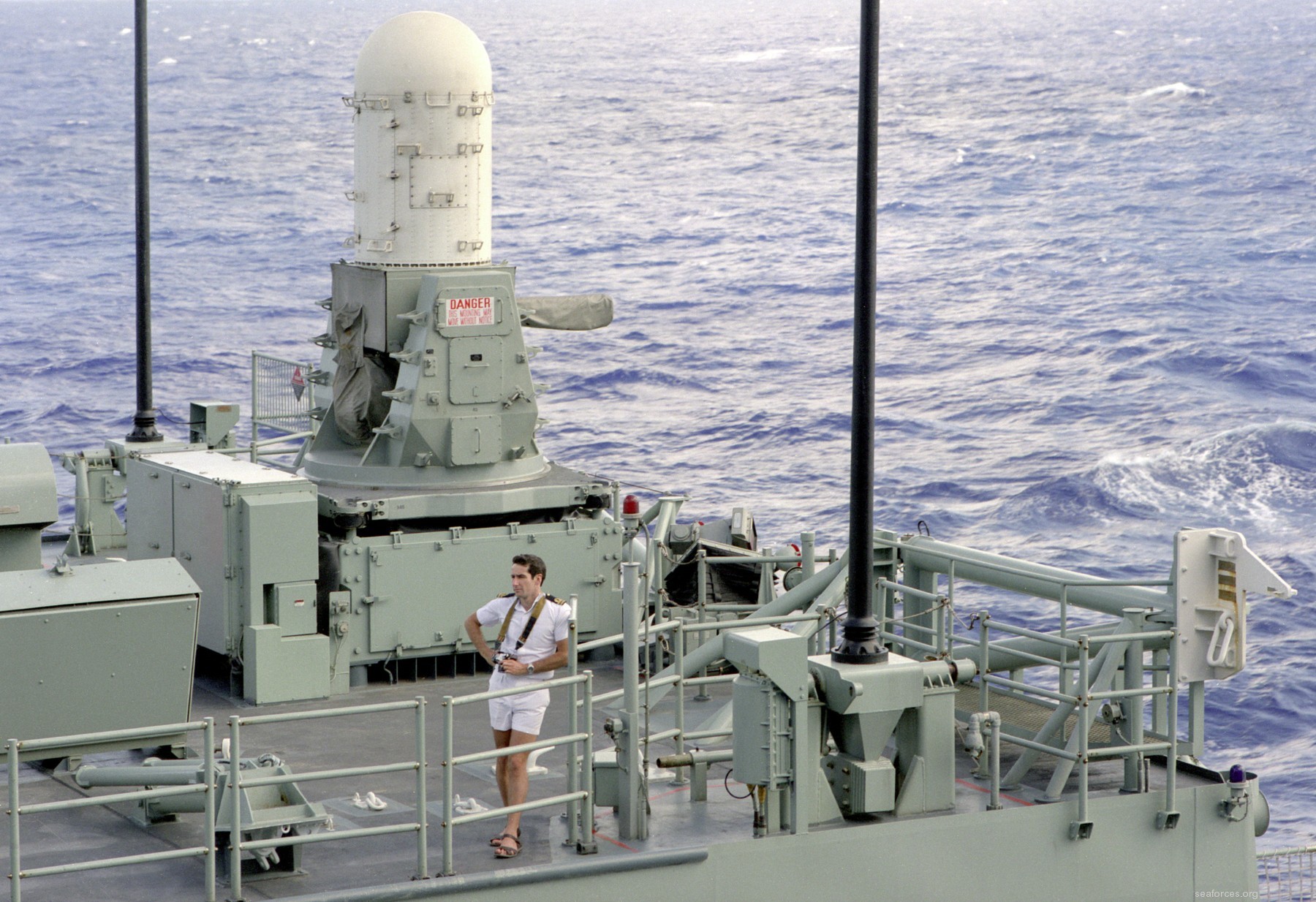 Mk-15 Phalanx close-in weapon system (CIWS) - June 1986 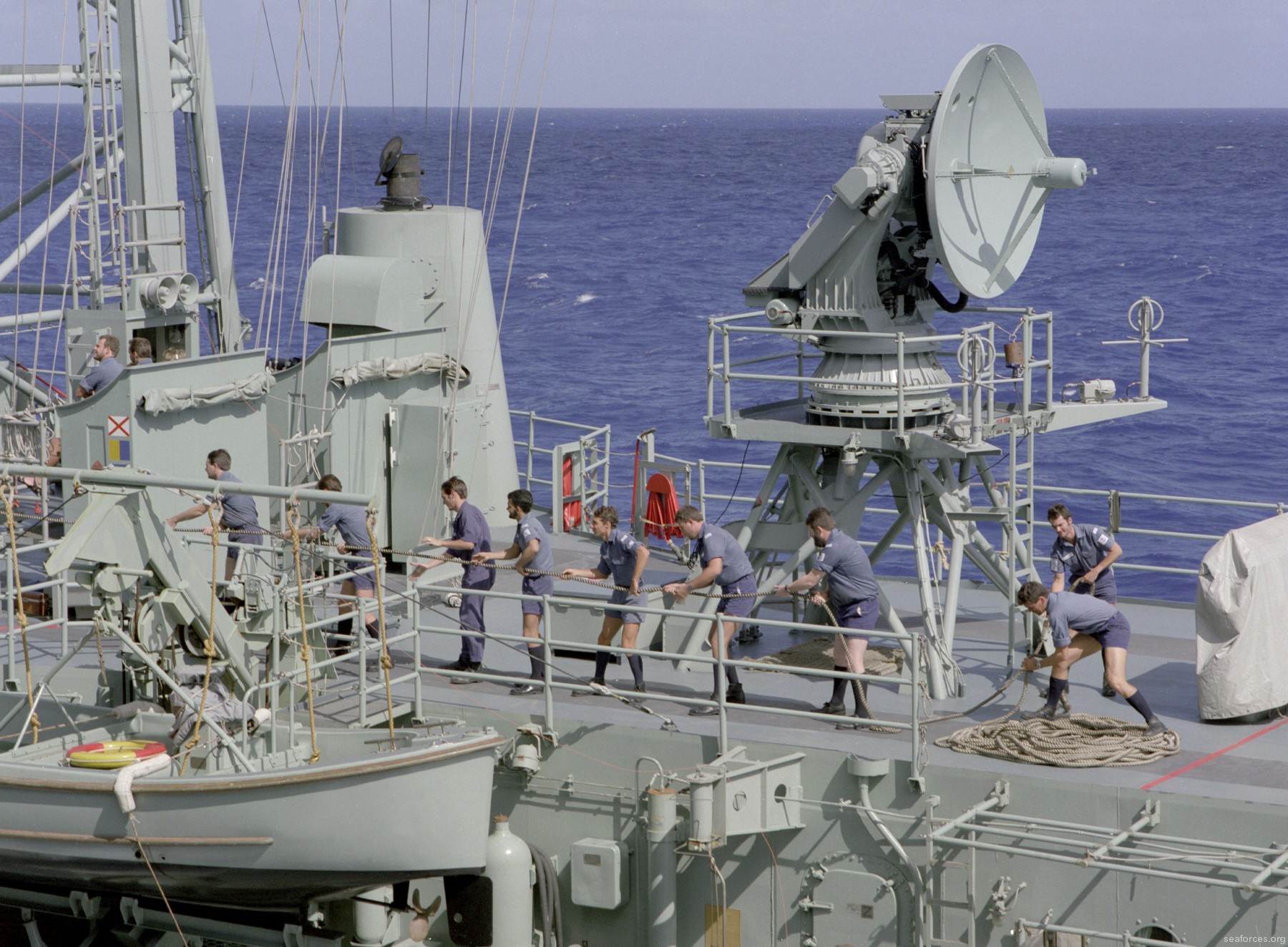 SPG-60 target illumination radar - June 1986 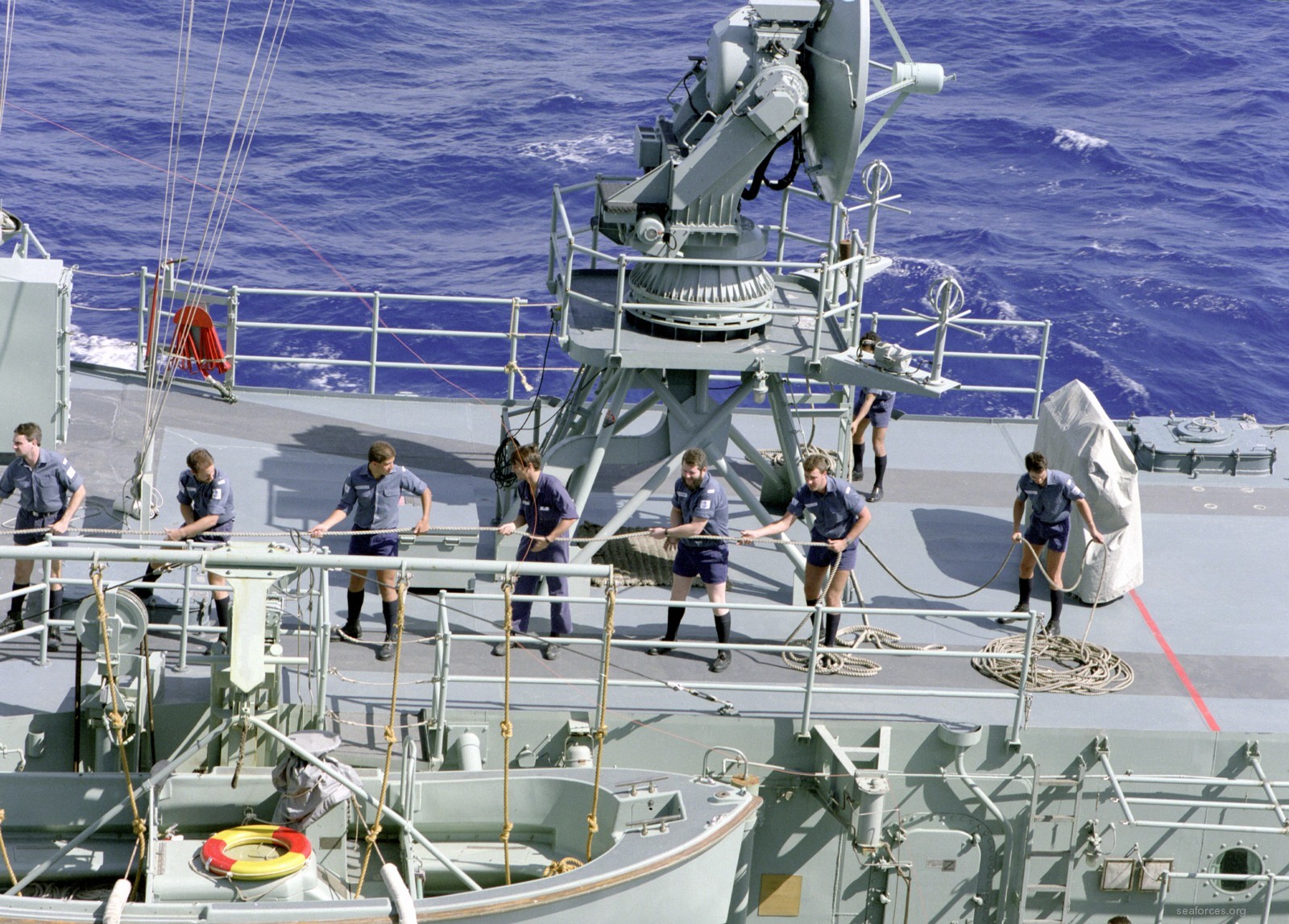 June 1986  June 1986 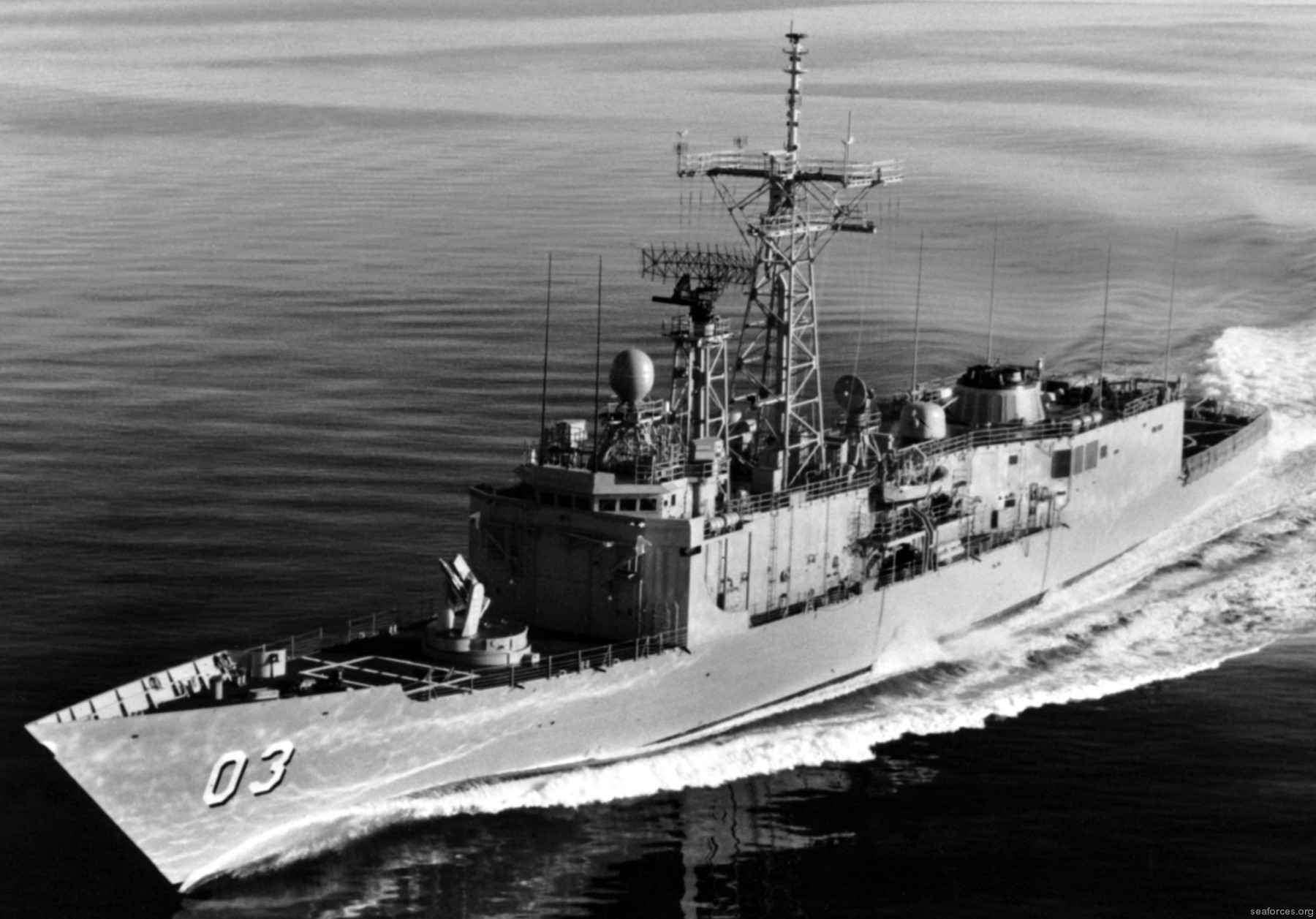 October 1982 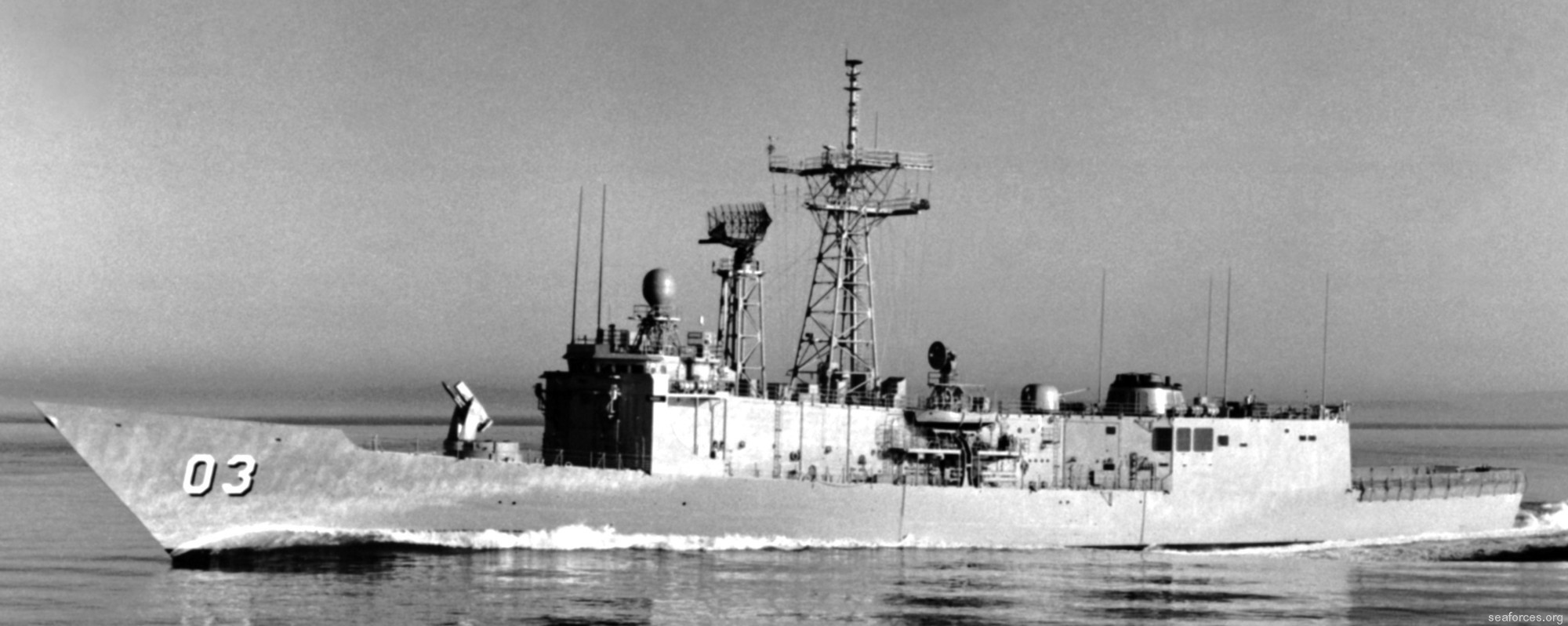 October 1982  October 1982 |
|
|
|
|
|
From commissioning until mid-1984, Sydney was attached to the United
States Navy's Pacific Fleet as a unit of Destroyer Squadron 9.
During this time, the frigate conducted working-up and training
exercises. In May 1987, Sydney visited Fiji, and was alongside in Suva when the first of the 1987 Fijian coups d'état occurred on 14 May. Sydney and sister ship Adelaide, alongside in Lautoka, were instructed to remain off Fiji to aid in any necessary evacuation of Australian citizens; the first component of what became Operation Morris Dance. Sydney remained on station until at least 29 May, when a phased withdrawal began. Following the acquisition of the Vulcan Phalanx close-in weapon system and the Seahawk helicopter, Sydney underwent a modification refit to be capable of using these weapons This refit occurred over 1987 and 1988, and also saw the installation of fin stabilisation systems. In January 1990, Sydney, Tobruk, and Jervis Bay were placed on standby to evacuate civilians from Bougainville Island following the Bougainville uprising. Sydney and Tobruk stood down in February, and the two ships departed with the submarine Oxley on a deployment to Turkey to commemorate the 75th anniversary of the landing at Anzac Cove. Following Anzac Day, Sydney continued on a round-the-world voyage, which included numerous diplomatic visits to European and American ports, the first visit of a RAN vessel to Sweden, and participation in a United States counter-narcotics operation in the Caribbean. The frigate arrived home in September. On 3 December 1990, Sydney and the Perth-class destroyer Brisbane arrived in the Persian Gulf to relieve HMA Ships Adelaide and Darwin as part of Operation Damask; the Australian military contribution to the Gulf War. Sydney was assigned to the escort screen around Battle Force Zulu (Task Force 154), a naval force built around four United States Navy aircraft carriers, and also participated in surveillance and boarding operations. The two Australian warships remained in the area until 26 March 1991. Sydney was awarded the Meritorious Unit Citation on 4 November 1991 for this deployment, and later received the battle honour "Kuwait 1991". Sydney was deployed back to the Persian Gulf for Operation Damask from September 1991 to February 1992, and again from June 1993 to December 1993. On 14 March 1994, Sydney rescued the crew of a yacht which had been participating in the Trans-Tasman Yacht Race before encountering difficulties. In early October, the frigate was called on to search for survivors of a light aircraft that ditched into the Tasman Sea. In May 1995, Sydney became the first RAN warship to visit the Russian port of Vladivostok, as support for a diplomatic and trade mission. In 1997, Sydney was one of several RAN vessels placed on standby following the outbreak of political disturbances in Papua New Guinea as part of the Sandline affair. No action was required by the Australian warships. Sydney was deployed to East Timor as part of the Australian-led INTERFET peacekeeping taskforce from 3 November to 19 December 1999. She received the battle honour "East Timor 1999" for this deployment. On 1 October 2000, Sydney took over from sister ship Newcastle as the RAN vessel assigned to support the peace negotiation process in the Solomon Islands that resulted in the signing of the Townsville Peace Agreement. In October 2001, Sydney returned to the Persian Gulf to operate in support of Operation Enduring Freedom as part of the War in Afghanistan. The frigate was joined by sister ship Adelaide and the amphibious warfare vessel Kanimbla in early December, and returned to Australia in March 2002. Sydney was sent back to the Gulf in support of 2003 invasion of Iraq, operating from May to August 1993 as part of Operations Falconer and Catalyst. The battle honours "Persian Gulf 2001-03" and "Iraq 2003" recognise these deployments. Sydney was the first of four frigates selected to go under the A$1 billion FFG Upgrade, with HMA Ships Darwin, Melbourne and Newcastle following. The upgrade features an 8-cell Mark 41 Vertical Launch System (VLS) for 32 Evolved Sea Sparrow Missiles (ESSM), upgrades to fire control and air warning radars, and replacement of the hull-mounted sonar and diesel generators. This refit commenced in 2002, but problems with integrating the frigates' anti-missile and anti-torpedo detection and defence systems meant that when Sydney was finished in 2007, she was initially not accepted back into service. By November 2008, the problems with the upgrade had been solved. On the morning of 13 March 2009, Sydney was one of seventeen warships involved in a ceremonial fleet entry and fleet review in Sydney Harbour, the largest collection of RAN ships since the Australian Bicentenary in 1988. The frigate led the line of thirteen ships involved in the ceremonial entry through Sydney Heads, and anchored in the harbour for the review. On 20 April 2009, Sydney and the Anzac-class frigate HMAS Ballarat departed from Sydney as part of Operation Northern Trident, a six-month round-the-world voyage by the two vessels, with numerous diplomatic visits and joint exercises with foreign navies. On 17 May, Sydney and Ballarat provided aid to two merchant vessels in the Gulf of Aden, driving off two separate groups of Somali pirates attacking the ships. Sydney remained in the area to report the incidents to Combined Task Force 151, while Ballarat escorted an impromptu convoy of eight ships, including the two that were attacked, to safety. The two warships visited ports in Western Europe, North America, the Pacific and northern Asia, with Sydney arriving back in her namesake city on 19 September. In May 2013, Sydney began a three-month deployment with the United States Seventh Fleet, attached to Carrier Strike Group Five as an escort for the carrier USS George Washington. In October 2013, Sydney participated in the International Fleet Review 2013 in Sydney. Sydney visited Hobart in February 2015 for the Royal Hobart Regatta. During the weekend of 7–8 February, the frigate was anchored in the River Derwent to free up wharf space for a civilian vessel. On attempting to return to Macquarie Wharf, the anchor chain broke, leaving the anchor 25 metres (82 ft) below. The anchor was later recovered by divers. The loss of the anchor prevented Sydney from fulfilling duties as the regatta flagship, as the ship would be unable to maintain a stationary position during the event. Sydney sailed into her namesake city for the final time on 27 February 2015. Despite flying a decommissioning pennant, the ship was not paid off until 7 November 2015; two years later than originally expected. In the interim, she was moored at Fleet Base East as an alongside training ship. source: wikipedia |
|
|
|
|
|
|
|
|
patches |
|
|
|
|
|
|
seaforces.org
|
Royal
Australian Navy start page
| |
|
